new posts in all blogs
Viewing: Blog Posts Tagged with: Simon and Schuster, Most Recent at Top [Help]
Results 1 - 25 of 229
How to use this Page
You are viewing the most recent posts tagged with the words: Simon and Schuster in the JacketFlap blog reader. What is a tag? Think of a tag as a keyword or category label. Tags can both help you find posts on JacketFlap.com as well as provide an easy way for you to "remember" and classify posts for later recall. Try adding a tag yourself by clicking "Add a tag" below a post's header. Scroll down through the list of Recent Posts in the left column and click on a post title that sounds interesting. You can view all posts from a specific blog by clicking the Blog name in the right column, or you can click a 'More Posts from this Blog' link in any individual post.
Because of Thursday. Patricia Polacco. 2016. Simon & Schuster. 40 pages. [Source: Review copy]
First sentence: Thursdays had always been lucky for Annie Fetlock. She was born on a Thursday. She won her first cooking contest at the age of eight on a Thursday. She met the love of her life, Mario, on a Thursday. They were married on a bright Thursday afternoon, and their two children were each born on a Thursday. One in June and the other in July. It was actually on a Thursday that Annie and Mario opened their diner together. And it was on a Thursday that Annie made her signature creation. A splendid pasta salad.
Premise/plot: I'm tempted to say there are two kinds of people in the world: those who love Patricia Polacco, and those who don't. If you've read Polacco, chances are, you'll know exactly what I mean. Her picture books tend to be for older readers, have a LOT of text, and tell wonderful, heartfelt, emotionally compelling STORIES. Not every Polacco is a tear-jerker. But. More often than not, she gives readers stories and characters worth thinking about. She doesn't go for the quick laugh or the word pun.
Annie Fetlock is the heroine of Because of Thursday. The first two or three pages fly readers through the first sixty or so years of her life. And then, the story begins...
My thoughts: If you love cats, I think you HAVE to read this one. While the title could be "Because of Thursday" for a couple of reasons, I'm going to go with the CAT. I really love how Thursday (the cat) really, truly brought joy into her life again and changed all her luck, if you will.
Who else should read this one? If you love COOKING or EATING or watching the Food Network.
Note to everyone: DON'T FORGET THIS ONE FOR THE 2017 CYBILS.
Text: 5 out of 5
Illustrations: 5 out of 5
Total: 10 out of 10
© 2016 Becky Laney of
Becky's Book Reviews

By:
Betsy Bird,
on 8/10/2016
Blog:
A Fuse #8 Production
(
Login to Add to MyJacketFlap)
JacketFlap tags:
Reviews,
middle grade fiction,
Simon and Schuster,
Atheneum,
Best Books,
middle grade realistic fiction,
Jason Reynolds,
Best Books of 2016,
2016 reviews,
Reviews 2016,
2016 middle grade fiction,
2016 realistic fiction,
diverse fiction,
Add a tag
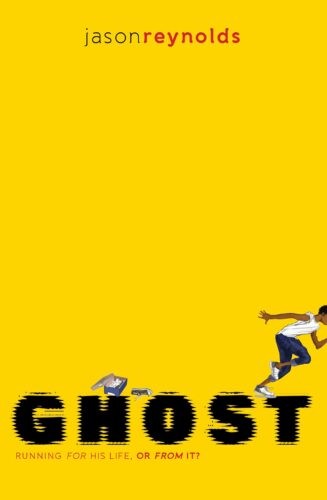 Ghost
Ghost
By Jason Reynolds
Atheneum (an imprint of Simon & Schuster)
$16.99
ISBN: 978-1-4814-5015-7
Ages 9-12
On shelves August 30th
This is a generalization, but in my experience librarians really enjoy reading within their comfort zones. They’ll travel outside of them from time to time but always they return to the books that they like the most. Children’s librarians are just the same. The fantasy readers stick to fantasy. The realism fans go with realism. Graphic novel readers with comics. When I served on a yearly committee of librarians in New York I’d notice that some books were difficult to get anyone to read. Horse books, for example, just sat on our shelves untouched. Nonfiction could take some prodding. And as for sports books . . . forget about it. Nobody ever got near them. Still, you can’t give up on them. Mike Lupica and Tim Green may rule the field but that doesn’t mean other people don’t make a lot out of athletics. If our Newbery winning The Crossover by Kwame Alexander taught us anything, it was that. Now Jason Reynolds, a young adult author until this year, has produced a middle grade novel centered on that must unlikely of sports: track. It skirts the clichés. It dodges the usual pitfalls. It makes you care about a kid who keeps messing up over and over and over again. It’ll make you like sports books, even if you can’t generally stand them. And now we’ve got to find a way to get a lot of it into the hands of kids. Stat.
Call him Ghost. You can call him Castle Crenshaw if you want to (that’s technically his name) but he’s been calling himself Ghost ever since the night his dad got drunk and threatened Castle and his mom with a gun. Ghost learned to run that night and you might say he’s been running ever since. He’s got a load of anger inside that he doesn’t know how to deal with so he tends to take it out on others at school. Then one day he spots a track warm-up and takes an instant dislike to the albino kid in the expensive tracksuit. Without thinking about it twice Ghost beats the guy on the track, running on the outside, which gets the attention of the coach. Coach begs Ghost to join and Ghost reluctantly agrees but it isn’t what he expected. The other kids there all have their own lives, few of them easy. The running is much harder than anything Ghost has ever experienced before. And then there’s the fact that no matter how fast he is, Ghost can’t run away from trouble. It follows him and if he’s not careful it’s going to follow him right onto the track.
Baseball. Basketball. Even football. These are the sports of fiction. I doubt anyone has ever run any statistics on it, but if you were to gather together all the children’s sports books and group them by type, the baseball books would undoubtedly outweigh all the others 2:1. That’s because baseball is a game with a natural rise and fall to its action. Basketball has speed and football has brute force, all good things when writing a story. Track? In track you run and then you stop. At least that’s how I always looked at it. For Jason Reynolds, though, it’s different. He didn’t write this book with track as a single focus. He looks at what the sport boils down to. Basically, this is a book about running. Running from mistakes (forgive the cliché), from very real threats, for your life, and for your team. Why you run and where you run and how you run. And if that’s where you’re coming from, then track is a very good choice of a sport indeed.
On paper, this book looks like it’s the sort of story that’s all been done before. That’s where Reynolds’ writing comes in to play. First off, it’s worth noticing that Mr. Reynolds is blessed with a keen sense of humor. This comes to play not just in the text but also in little in-jokes here and there. Like the fact that one of the runners (that, I should mention, gets cut later in the book because his grades are slipping) is named Chris Myers. Christopher Myers is the son of Walter Dean Myers, and a friend to Jason Reynolds. I love Jason’s descriptions too. Mr. Charles at the corner store, “looks just like James Brown if James Brown were white. . .” Or Ghost saying later, “… for something to make you feel tough, you gotta be a little bit scared of it at first.” There are some pretty fantastic callbacks hidden in the story as well. Right at the start, almost like it’s some kind of superhero origin story, we hear how Ghost heard the gun go off that night he ran away from his home with his mom and “I felt like the loud shot made my legs move even faster.” That ties in beautifully with the starter pistol that goes off at the very very end of the book.
But maybe what I like the most about Jason Reynolds’ books is that he applies this keen sense of the complexity to his characters. I don’t think the man could write a straight one-dimensional villain to save his soul. Even his worst characters have these brief moments of humanity to them. In this case, Ghost’s dad is the worst character. You don’t get much worse than shooting at your wife and kid after all. Yet for all that, Ghost still can’t help but love the guy and eats sunflower seeds in his memory. Each character in the book has layers that you can peel away as the story progresses. Even Ghost, ESPECIALLY Ghost, who makes you want to yell and him and cheer for him, sometimes at the same time.
There’s been a monumental push for increased diversity in children’s literature in the last few years. Diversity can mean any number of things and it often focuses on race. In a weird way, increasing the number of racially diverse books on a given publisher’s release calendar isn’t hard if the publisher is dedicated to the notion. Far more difficult is figuring out how you increase the economic diversity. Middle grade characters are almost always middle class. If they’re working class then they tend to be historical. Contemporary lower income kids in realistic novels are almost unheard of. For example, how many books for children have you ever read with kids living in shelters? I’ve read just one, and I’m a children’s librarian. So I watched what Reynolds did here with great interest. Ghost isn’t destitute or anything but his single mom makes ends meet by working long hours at a hospital. Middle class kids are remarkably good at ignoring their own privilege while kids like Ghost become almost invisible. In the book, Ghost’s decision to initially race Lu isn’t solely based on how Lu struts around the track, thinking he’s the bee’s knees. It’s also on his clothes. “…Lu, was decked out in the flyest gear. Fresh Nike running shoes, and a full-body skintight suit . . . He wore a headband and a gold chain around his neck, and a diamond glinted in each ear.” Later Ghost makes a decision regarding a particularly fancy pair of running shoes. That’s an economic decision as well. Those are the most obvious examples, but the book is full of little mentions, peppered throughout, of where Ghost’s class comes in to things. It’s nice to see an author who gets that. We are often affected by forces outside our control, forces we don’t even necessarily notice, particularly when we’re children. If young readers see it, they’ll be reading between the lines, just like Reynolds wants them to.
Right at the beginning of the book, when Coach is trying to convince Ghost’s mom that he should be running, Ghost realizes that he’s in a situation that’s played out in loads of sports films. He thinks, “If this went like the movies, I was either going to score the game-winning touchdown (which is impossible in track) or . . . die.” Sometimes you can gauge how good a book is by how self-aware its characters are. But sometimes you just read a book, put it down, and think, “Man. That was good. That was really good.” This is a book that actually made me tear up, and there aren’t a lot of middle grade books that do that. I was rooting for Ghost hard, right until the end. I was caring about a sport that I’d never otherwise think about in a million years. And I was admiring it from start to finish for all that it accomplishes in its scant 180 pages. This is the book you hand to the kids who want something real and good and honest. There are a lot of Ghosts out there in the world. Hopefully some of them will discover themselves here. Run, don’t walk, to pick this book up.
On shelves August 30th.
Source: Galley sent from publisher for review.
Like This? Then Try:

Unhooked. Lisa Maxwell. 2016. Simon & Schuster. 342 pages. [Source: Library]
First sentence:
Once upon a time, there was a boy not so very far from being a man. He crossed a sea to venture to London, for he wanted to find his brother, who was the bravest of soldiers. He carried with him only a light pack, for he had every intention of returning...The novel opens with a move. Gwen and her mom have moved...again. Readers are given the impression that this happens a lot. That her mom is very unstable, that the daughter takes care of the mom instead of the other way around. Along for the trip is Gwen's best friend, Olivia. The tone of the novel from the beginning is dark and mysterious. (Readers witness Gwen's mom FREAK out because of a drawing on a nursery wall. On an evening run, this paranoia seems to have spread to Gwen who FREAKS out when she sees her friend talking to a stranger.) Gwen's nerves continue to be frazzled that night. She can't sleep. Then her worst fears come true.
I will never forget how this moment feels. Like I am being pinned down by night itself. I thrash wildly, trying to get away, but the intruder holds me easily, and then, pressing his face into the curve of my neck, he inhales--a sharp intake of breath--like an animal scenting its prey. When he exhales, his host, fetid breath crawls against my skin. Instinctively I jerk back, but his body cages me in, and his scent overwhelms me--he smells like the damp underside of old leaves, early and a little sour from decay. Like hunger and wanting. But as close as he is to my face, I can't make him out. The room has grown so dark, there isn't enough light for me to see him. Without warning, something warm and wet traces the length of my exposed neck with excruciating thoroughness. He's liking me. Tasting me. Bile rises hot and acidic in my throat, and I understand that I am not going to make it out of this untouched. I don't know if I'm going to make it out at all. (34-5)
Gwen is kidnapped--abducted--from her new home and taken....where????? Well, first she wakes up on a ship. And then she spots an island in the distance...and told that it's NEVERLAND.
There is a Captain (named Rowan) at odds with someone calling himself PAN. But forget what you know about Peter Pan and Neverland.
Unhooked is a read that is best described as dark, intense, dangerous, very life-and-death. Nothing trivial or jolly about it.
Is there a love triangle? Perhaps for a chapter or two as Gwen tries to make up her mind who is telling the truth. But for 90% of the book there is not a love triangle to be found.
Is there romance? Yes. While I would not describe it as instant-love, I would say there's some instant-attraction going on. I think there is a decent amount of relationship development occurring throughout considering the circumstances.
What about the characters???? I love the depth of characterization in this one. The villain was fully realized, as was the hero and heroine.
I also really enjoyed the dialogue of this one. Very well done!
One more quote:
"But in the story--"
"Were I you," he says, turning back almost viciously, cutting off my words, "I'd not put my trust in stories. They tend to pass off lies as the truth and hide the truth in their lies." (75)
© 2016 Becky Laney of
Becky's Book Reviews
Last October, Danielle M. Smith, a friend and agent, picked up the phone and called me. My husband and I happened to be away, at a just-the-two-of-us retreat. It was raining. Outside, a river rose. I talked to Danielle for close to an hour.
About life, moose, cookies, hope. About what I was and was not writing. She asked the question. I said "not much." Finally, I confessed. There was this book, this very personal book, a book that I'd been writing. I wasn't sure I'd ever publish again. But the truth was, I couldn't stop myself from writing.
A few weeks later, I finished that book. I sent it to Danielle, a presumption. It isn't as if she'd asked for it. In fact, she actually had not. Danielle was busy building her new list with Red Fox Literary. She was selling story after story. I don't think she was in the market for another client. But there, with this book, I was.
She read right away. She had a hunch. A little while later, the book went to auction.
So, Danielle, this is for you. And this is for Caitlyn Dlouhy, editor extraordinaire, who said so much when we first talked that still resonates here, in my head and heart. And this is for the other really kind and smart editors who talked with me that week. Each of you a boon. Each unforgettable.
Sometimes, we give up on ourselves. Sometimes we're given (a gift) brand new chances.
I'm grateful for this one.

By:
Betsy Bird,
on 6/29/2016
Blog:
A Fuse #8 Production
(
Login to Add to MyJacketFlap)
JacketFlap tags:
picture book poetry,
African-American authors and illustrators,
Best Books of 2016,
2016 reviews,
Reviews 2016,
2016 poetry,
Reviews,
history,
poetry,
Simon and Schuster,
Atheneum,
Best Books,
Ashley Bryan,
multicultural children's literature,
African-American history,
Add a tag
 Freedom Over Me: Eleven slaves, their lives and dreams brought to life
Freedom Over Me: Eleven slaves, their lives and dreams brought to life
By Ashley Bryan
Atheneum (an imprint of Simon & Schuster)
$17.99
ISBN: 978-1481456906
Ages 9 and up
On shelves September 13th
Who gives voice to the voiceless? What are your credentials when you do so? When I was a teen I used to go into antique stores and buy old family photographs from the turn of the century. It still seems odd to me that this is allowed. I’d find the people who looked the most interesting, like they had a story to tell, and I’d take them home with me. Then I’d write something about their story, though mostly I just liked to look at them. There is a strange comfort in looking at the faces of the fashionable dead. A little twinge of momento mori mixed with the knowledge that you yourself are young (possibly) and alive (probably). It’s easy to hypothesize about a life when you can see that person’s face and watch them in their middle class Sunday best. It is far more difficult when you have no face, a hint of a name, and/or maybe just an age. Add to this the idea that the people in question lived through a man made hell-on-earth. When author/illustrator/artist Ashley Bryan acquired a collection of slave-related documents from the 1820s to the 1860s he had in his hands a wealth of untold stories. And when he chose to give these people, swallowed by history, lives and dignity and peace, he did so as only he could. With the light and laughter and beauty that only he could find in the depths of uncommon pain. Freedom Over Me is a work of bravery and sense. A way of dealing with the unimaginable, allowing kids an understanding that there is a brain, heart, and soul behind every body, alive or dead, in human history.
The date on the Fairchilds Appraisement is July 5, 1828. On it you will find a list of goods to be sold. Cows, hogs, cotton . . . and people. Eleven people, if we’re going to be precise (and we are). Most have names. One does not. Just names on a piece of paper almost 200-years-old. So Ashley Bryan, he takes those names and those people, and for the first time in centuries we get to meet them. Here is Athelia, a laundress who once carried the name Adero. On one page we hear about her life. On the next, her dreams. She remembers the village she grew up in, the stories, and the songs. And she is not alone in this. As we meet each person and learn what they do, we get a glimpse into their dreams. We hear their hopes. We wonder about their lives. We see them draw strength from one another. And in the end? The sale page sits there. The final words: “Administered to the best of our Judgment.”
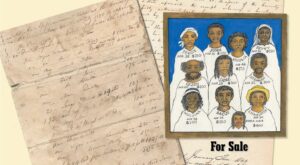 I have often said, and I say it to this day, that if there were ever a Church of Ashley Bryan, every last person who has ever met him or heard him speak would be a member. There are only a few people on this great green Earth that radiant actual uncut goodness right through their very pores. Mr. Bryan is one of those few, so when I asked at the beginning of this review what the credentials are for giving voice to the voiceless, check off that box. There are other reasons to trust him, though. A project of this sort requires a certain level of respect for the deceased. To attain that, and this may seem obvious, the author has to care. Read enough books written for kids and you get a very clear sense of those books written by folks who do not care vs. folks that do. Even then, caring’s not really enough. The writing needs to be up to speed and the art needs to be on board. And for this particular project, Ashley Bryan had a stiffer task at hand. Okay. You’ve given them full names and backgrounds and histories. What else do they need? Bryan gives these people something intangible. He gives them dreams. It’s right there in the subtitle, actually: “Eleven slaves, their lives and dreams brought to life.”
I have often said, and I say it to this day, that if there were ever a Church of Ashley Bryan, every last person who has ever met him or heard him speak would be a member. There are only a few people on this great green Earth that radiant actual uncut goodness right through their very pores. Mr. Bryan is one of those few, so when I asked at the beginning of this review what the credentials are for giving voice to the voiceless, check off that box. There are other reasons to trust him, though. A project of this sort requires a certain level of respect for the deceased. To attain that, and this may seem obvious, the author has to care. Read enough books written for kids and you get a very clear sense of those books written by folks who do not care vs. folks that do. Even then, caring’s not really enough. The writing needs to be up to speed and the art needs to be on board. And for this particular project, Ashley Bryan had a stiffer task at hand. Okay. You’ve given them full names and backgrounds and histories. What else do they need? Bryan gives these people something intangible. He gives them dreams. It’s right there in the subtitle, actually: “Eleven slaves, their lives and dreams brought to life.”
And so the book is a work of fiction. There is no amount of research that could discover Bacus or Peggy or Dora’s true tales. So when we say that Bryan is giving these people their lives back, we acknowledge that the lives he’s giving them aren’t the exact lives they led. And so we know that each person is a representative above and beyond the names on that page. Hence the occupations. Betty is every gardener. Stephen every architect. Dora every child that was born to a state of slavery and labored under it, perhaps their whole lives. And there is very little backmatter included in this book. Bryan shows the primary documents alongside a transcription of the sales. There is also an Author’s Note. Beyond that, you bring to the book what you already know about slavery, making this a title for a slightly older child readership. Bryan isn’t going to spend these pages telling you every daily injustice of slavery. Kids walk in with that knowledge already in place. What they need now is some humanity.
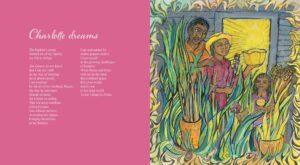 Has Mr. Bryan ever done anything with slavery before? I was curious. I’ve watched Mr. Bryan’s books over the years and they are always interesting. He’s done spirituals as cut paper masterpieces. He’s originated folktales as lively and quick as their inspirational forbears. He makes puppets out of found objects that carry with them a feeling not just of dignity, but pride. But has he ever directly done a book that references slavery? So I examined his entire repertoire, from the moment he illustrated Black Boy by Richard Wright to Susan Cooper’s Jethro and the Jumbie to Ashley Bryan’s African Folktales, Uh-Huh and beyond. His interest in Africa and song and poetry knows no bounds, but never has he engaged so directly with slavery itself.
Has Mr. Bryan ever done anything with slavery before? I was curious. I’ve watched Mr. Bryan’s books over the years and they are always interesting. He’s done spirituals as cut paper masterpieces. He’s originated folktales as lively and quick as their inspirational forbears. He makes puppets out of found objects that carry with them a feeling not just of dignity, but pride. But has he ever directly done a book that references slavery? So I examined his entire repertoire, from the moment he illustrated Black Boy by Richard Wright to Susan Cooper’s Jethro and the Jumbie to Ashley Bryan’s African Folktales, Uh-Huh and beyond. His interest in Africa and song and poetry knows no bounds, but never has he engaged so directly with slavery itself.
Could this have been done as anything but poetry? Or would you even call each written section poetry? I would, but I’ll be interested to see where libraries decide to shelve the book. Do you classify it as poetry or in the history section under slavery? Maybe, for all that it seems to be the size and shape of a picture book, you’d put it in your fiction collection. Wherever you put it, I am reminded, as I read this book, of Good Masters! Sweet Ladies! where every lord and peasant gets a monologue from their point of view. Freedom Over Me bears more than a passing similarity to Good Masters. In both cases we have short monologues any kid could read aloud in class or on their own. They are informed by research, and their scant number of words speak to a time we’ll never really know or understand fully. And how easy it would be to turn this book into a stage play. I can see it so easily. Imagine if you turned the Author’s Note into the first monologue and Ashley Bryan his own character (behold the 10-year-old dressed up as him, mustache and all). Since the title of the book comes from the spiritual “Oh, Freedom!” you could either have the kids sing it or play it in the background. And for the ending? A kid playing the lawyer or possibly Mrs. Fairchilds or even Ashley comes out and reads the statement at the end with each person and their price and the kids step forward holding some object that defines them (clothing sewn, books read, paintings, etc.). It’s almost too easy.
 The style of the art was also interesting to me. Pen, ink, and watercolors are all Mr. Bryan (who is ninety-two years of age, as of this review) needs to render his people alive. I’ve see him indulge in a range of artistic mediums over the years. In this book, he begins with an image of the estate, an image of the slaves on that estate, and then portraits and renderings of each person, at rest or active in some way. “Peggy” is one of the first women featured, and for her portrait Ashley gives her face whorls and lines, not dissimilar to those you’d find in wood. This technique is repeated, to varying degrees, with the rest of the people in the book. First the portrait. Then an image of what they do in their daily lives or dreams. The degree of detail in each of these portraits changes a bit. Peggy, for example, is one of the most striking. The colors of her skin, and the care and attention with which each line in her face is painted, make it clear why she was selected to be first. I would have loved the other portraits to contain this level of detail, but the artist is not as consistent in this regard. Charlotte and Dora, for example, are practically line-less, a conscious choice, but a kind of pity since Peggy’s portrait sets you up to think that they’ll all look as richly detailed and textured as she.
The style of the art was also interesting to me. Pen, ink, and watercolors are all Mr. Bryan (who is ninety-two years of age, as of this review) needs to render his people alive. I’ve see him indulge in a range of artistic mediums over the years. In this book, he begins with an image of the estate, an image of the slaves on that estate, and then portraits and renderings of each person, at rest or active in some way. “Peggy” is one of the first women featured, and for her portrait Ashley gives her face whorls and lines, not dissimilar to those you’d find in wood. This technique is repeated, to varying degrees, with the rest of the people in the book. First the portrait. Then an image of what they do in their daily lives or dreams. The degree of detail in each of these portraits changes a bit. Peggy, for example, is one of the most striking. The colors of her skin, and the care and attention with which each line in her face is painted, make it clear why she was selected to be first. I would have loved the other portraits to contain this level of detail, but the artist is not as consistent in this regard. Charlotte and Dora, for example, are practically line-less, a conscious choice, but a kind of pity since Peggy’s portrait sets you up to think that they’ll all look as richly detailed and textured as she.
Those old photographs I once collected may well be the only record those people left of themselves on this earth, aside from a name in a family tree and perhaps on a headstone somewhere. So much time has passed since July 5, 1828 that it is impossible to say whether or not the names on Ashley’s acquired Appraisement are remembered by their descendants. Do families still talk about Jane or Qush? Is this piece of paper the only part of them that remains in the world? It may not have been the lives they led, but Ashley Bryan does everything within his own personal capacity to keep these names and these people alive, if just for a little longer. Along the way he makes it clear to kids that slaves weren’t simply an unfortunate mass of bodies. They were architects and artists and musicians. They were good and bad and human just like the rest of us. Terry Pratchett once wrote that sin is when people treat other people as objects. Ashley treats people as people. And times being what they are, here in the 21st century I’d say that’s a pretty valuable lesson to be teaching our kids today.
On shelves September 13th.
Source: Galley sent from publisher for review.
Like This? Then Try:
Professional Reviews: A star from Kirkus
Misc: Interested in the other books Mr. Bryan has written or illustrated over the course of his illustrious career? See the full list on his website here.

Strictly No Elephants. Lisa Mantchev. Illustrated by Taeeun Yoo. 2015. Simon & Schuster. 32 pages. [Source: Library]
First sentence: The trouble with having a tiny elephant for a pet is that you never quite fit in.
Premise/plot: Readers meet a boy and his pet elephant in Lisa Mantchev's Strictly No Elephants. The book recognizes loneliness and celebrates friendship. One day the boy and his elephant want to go to a pet club meeting, but neither is allowed inside because of a sign that states: strictly no elephants. He's sad, but, hope is not lost for he soon meets a girl with a pet skunk. Together the two decide to form a club of their own where ALL are welcome.
My thoughts: I really, really liked this one. I read it several times, and liked it more each time. I liked the text. I liked the message. The text incorporates little lessons about friendship into the text. It isn't completely seamless, but, it works for me just fine. The illustrations are practically perfect. Loved them!!!
Watch the
Emily Arrow video.
Text: 4 out of 5
Illustrations: 5 out of 5
Total: 9 out of 10
© 2016 Becky Laney of
Becky's Book Reviews
.jpg?picon=107)
By:
Lizzy Burns,
on 4/19/2016
Blog:
A Chair, A Fireplace and A Tea Cozy
(
Login to Add to MyJacketFlap)
JacketFlap tags:
reviews,
adult fiction,
mystery,
simon and schuster,
2015,
favorite books of 2016,
Edgar Nominees,
Jessica Knoll,
Add a tag
Luckiest Girl Alive by Jessica Knoll. Simon & Schuster. 2015. Library copy.
 The Plot:Ani FaNelli has the perfect life: a great job at a magazine, a wonderful apartment in New York, just the right wardrobe, and a handsome, rich, old-money fiance. And she's 28 so it's all right on target.
The Plot:Ani FaNelli has the perfect life: a great job at a magazine, a wonderful apartment in New York, just the right wardrobe, and a handsome, rich, old-money fiance. And she's 28 so it's all right on target.
Perfect. If you saw her, with the ring and the clothes and the haircut and her figure you'd see her and think.... perfect.
Maybe you'd be jealous. Maybe you'd hate her. Maybe you'd want to be her.
Anyone else may want to hide her past and where she came from, and so, OK, yes, her name used to be TifAni. And TifAni was suburban middle class but private school and just the right college have helped her become Ani. And Ani wants to show everyone just how perfect her life is, so she's agreed to appear in a documentary about what happened at her school when she was 14. Her fiance doesn't want her to do it, doesn't want her revisiting such terrible times, but she's going to show them all.
Show them with her perfection.
And if Ani can't sleep, so what? Who can tell? And if she's tired of pretending to be the perfect girl to show she's worthy of the perfect fiance, well. Everyone pretends, right? Everyone gets angry, right? No one wears their true face.
The Good: Ani's seething anger is revealed in the first pages. She is shopping for her wedding registry with Luke Harrison, her fiance (and wow, she cannot wait to ditch FaNelli and become a Harrison), and as they look at knives she fantasizes stabbing him.
Ani name drops right and left, to show she knows. She knows. And you don't. She knows the right shoes, the right slacks, the right bag, the right diet, the right way to pass the salt and pepper. She's dedicated her life to being the person who fits in with a certain class of people, Luke's class, and at first I was as annoyed as I get at 7th graders in middle grade fiction who only care about being popular. Why -- why does it matter so much?
Why is it so important, what other people think? Why can Ani only see value in herself based on how others see her? And it's not in an ingratiating way, because Ani also has an edge to her. An anger to her. So she uses her knowing the right thing to do as weapon against those who don't know. And Ani, of course, can figure out those who think they know -- until she shatters that belief by how she dresses and what she eats and what she does for fun.
And the chapters take us back to when Ani was 14, when she was one of those kids who wanted to be popular and liked. To have friends and a boyfriend. And Ani was at a new school, a private school with rich privileged kids who came from the right type of money. And if you haven't guessed, someone named TifAni FaNelli doesn't come from the right type of money.
Something happened, at that perfect school with those perfect kids. And it's terrible. And the aftermath is terrible. And you can see how that shapes the grown up Ani, why she became who she is.
And then, something even worse happens to teen TifAni. And that's the mystery, of course -- what happened to that teenager, and what she did. And how that made her who she is.
But as the reader realizes how the past shaped Ani, down to her anger, the question arises -- when will Ani figure it out? Just as she made herself perfect with her clothes and her hair, she figured out what Luke wanted and became that perfect girl. (And I don't feel sorry for Luke, because whenever Ani slips and shows her true self, Luke is horrified and tries to put her back into the box of perfect girlfriend.) And while the "big reveal" may have been those terrible things from her high school years, and part of the mystery is how that shaped the adult Ani, what I read for, eagerly, was for adult Ani to realize that what she had done to recover and heal was now damaging.
Basically, I waited for her to realize that "winning" isn't being married at 28 to Mr Wonderful -- especially when Mr Wonderful isn't.
Anyway. I LOVED this book, and definitely teen appeal. I'll put it down as a Favorite Read in 2016. And yes, it's a 2015 book so I'm sure many of you have already discovered it -- but I'm getting read for the Edgars Award later this month and this is a nominee so that explains why I didn't read it until now.
Amazon Affiliate. If you click from here to Amazon and buy something, I receive a percentage of the purchase price.
© Elizabeth Burns of A Chair, A Fireplace & A Tea Cozy



By:
Becky Laney,
on 3/17/2016
Blog:
Becky's Book Reviews
(
Login to Add to MyJacketFlap)
JacketFlap tags:
cats,
J Fiction,
J Fantasy,
Simon and Schuster,
Animal fantasy,
verse novel,
library book,
2016,
2016 Cybils-Eligible,
books reviewed in 2016,
Add a tag
Little Cat's Luck. Marion Dane Bauer. Illustrated by Jennifer A. Bell. 2016. Simon & Schuster. 224 pages. [Source: Library]
Did I enjoy reading Marion Dane Bauer's Little Cat's Luck? Yes, I did! What should you know about the book? I'd recommend it to elementary-aged readers who love animals, who love cats especially. It is also a verse novel. One of those verse novels why you're not really quite sure why it's written in verse instead of prose. Personally, prose or verse doesn't really matter in this particular story because I really like cats.
Patches, our heroine, tumbles through a window screen to begin her adventure in the wider world. She's uneasy for the first few chapters, and, readers may be just as puzzled as she is as to why. I guessed a little bit ahead of the big reveal. But it's not something that I guessed from chapter one!
Essentially, Patches is a cat on a mission: find a cozy, just-right place that is out-of-the-way and dark and a bit quiet. She finds her SPECIAL PLACE, but, it isn't without risk. For her special place isn't really *hers* to have. It is a dog house. But this dog house belongs to the so-called meanest dog in town. The super-smelly dog that barks constantly--if he's awake--the one that every person seems to know as *that dog.* His name is Gus. And Gus and Patches will have a lot to say to one another....
I liked this one very much. And for those who are hesitant about animal books because they worry that the animal on the cover will die, don't worry about picking this one up and getting properly attached to the characters.
© 2016 Becky Laney of
Becky's Book Reviews
The Dorito Effect: The Surprising New Truth About Food and Flavor. Mark Schatzker. 2015. Simon & Schuster. 272 pages. [Source: Library]
The Dorito Effect: The Surprising New Truth About Food and Flavor by Mark Schatzker is a gush-worthy book. It is. I loved, loved, loved, LOVED it. It is packed with information; it is fascinating--crammed full of 'I didn't-know-that-facts; it is compelling--a real page-turner! And it had me hooked from the very start.
In the early autumn of 1961, a thirty-seven-year-old housewife and mother named Jean Nidetch was pushing a shopping cart through a Long Island supermarket when she bumped into a woman she knew. "You look so marvelous," her friend said, and for a sweet moment Nidetch basked in the compliment. Unfortunately, her friend kept talking. "When are you due?" Nidetch was not pregnant. At the time, she stood five seven and weighed 214 pounds, which marked her, in today's parlance, as obese, although Nidetch didn't known what that word meant, or that the obese were, at that very moment, coalescing into a demographic ripple that was on its way to becoming a wave.
The Dorito Effect is in effect a book about many things:
- the history of food (manufactured, processed, taken-to-market food), or, the business of getting food on the supermarket shelves; in part it is focused on 'junk food' but only in part. Chicken is not junk food--necessarily--but he spends a lot of time talking about CHICKEN.
- the history of diets (the book opens with the founding of Weight Watchers by Jean Nidetch), or, let the numbers shock you--they speak for themselves really. Did you know that 69% of Americans are obese or overweight?
- the history of a society/culture obsessed with food
- the argument that food is without a doubt losing its flavor, an examination of WHY food is losing its flavor (Here is where he talks a lot about chickens, also, things like tomatoes and strawberries.) This is the section where he talks about farming and ranching--agriculture--how things have changed in the past seventy-five years or so. IN other words, what we've DONE to our food.
- the flavor-making business, how 'natural' and 'artificial' flavors have evolved in the past hundred years; how almost everything seems to have flavor added to it before it's placed on the shelves; what this manufactured flavor might be doing to our bodies and minds.
- The scientific process behind it all: nutrition, flavor, behavior, etc. In other words: why we crave what we crave, why we eat what we eat, why we behave the way we do, why we can both 'want' to be thin and to eat as much as we want. Why we are so quick to blame just 'one' thing for 'making' us fat.
- Why does food taste good in the first place?! (You'll learn all about plant secondary compounds!)
- Why are some people ADDICTED to food and others are not? Why are certain foods delicious but unsatisfying?
- His premise: THE LONGER WE IGNORE FLAVOR, THE LONGER WE ARE BOUND TO BE VICTIMS OF IT. (17) Or, THE FOOD PROBLEM IS A FLAVOR PROBLEM. (157)
- the search for the ultimate, best-tasting, natural food (chicken, tomatoes, etc.) a search for a solution to a big, big problem
The Dorito Effect, however, is not about:
- other factors that lead to obesity or may lead to obesity
- practical steps you can take to become thinner and healthier
- in other words, the book, is NOT a diet book; there is no weight loss or exercise plan
Thought-provoking quotes--or a small sampling of quotes that I wanted to read aloud to anyone I could corner--
In the early '60s, well over half of Americans were "slender" and of the nonslender, the vast majority was classified as "overweight"--they needed to lose a few pounds. It is now abnormal to be slender. Today, less than a third of Americans are slender, which is another way of saying more than two-thirds are either overweight or obese. (7)
A thing, of course, is different from a flavor. Different things have their own different flavors. Oranges taste like oranges. Bananas taste like bananas. Tacos taste like tacos, and corn chips taste like corn chips. That, at least, is how the world worked back when there were still families who'd never heard of McDonald's. (13)
The Dorito didn't just predict the future of tortilla chips. It didn't just predict the future of snack food either. It predicted the future of all food. Nothing tastes like what it is anymore. Everything tastes like what we want it to taste like. As food gets blander, we crank out zestiness by the hundreds of tons to make up for it. Most people recognize this as junk food. But it's happening to food served at restaurants and the food people buy at the supermarket and cook, from scratch, at home. It's happening to blueberries, chicken breast, broccoli, and lettuce, even fennel. Everything is getting blander and simultaneously more seasoned. Everything is becoming like a Dorito. The birth of Doritos was a watershed moment. Flavor wasn't up to Mother Nature anymore. Now it was in the hands of the folks in marketing. (15)
Eating has as much to do with nutrients as sex does with procreation...We think in flavor, we dream about flavor, and we get up out of our chair when the bases are loaded in the bottom of the ninth to get it. We eat for one reason: because we love the way food tastes. Flavor is the original craving. (16)
The Dorito Effect, very simply, is what happens when food gets blander and flavor technology gets better. This book is about how and why that took place. It's also about the consequences, which include obesity and metabolic disturbance along with a cultural love-hate obsession with food. This book argues that we need to begin understanding food through the same lens by which it is experienced: how it tastes. (17)
We have taken a system designed to bring our bodies to a state of nutritional completion and turned it against us (17)
Food has changed. The change has been documented scientifically. And it is a story best told by chicken, which has become not only our number one source of animal protein but is simultaneously the blandest and most flavored--the most Dorito-like--meat. (20)
We eat gigantic babies. As a paper in the journal Poultry Science puts it, if humans grew as fast as broilers, "a 3 kg (6.6 lb) newborn baby would weigh 300 kg (660 lb) after 2 months." (26)
Modern food may be the most compelling lie humans have ever told. (40)
One after another, humans have captured the chemicals that characterize foods like apples, cherries, carrots, and beef and moved their production from plants and animals to factories. In 1965, there were less than 700 of these chemicals. Today, there are more than 2,200. (50)
Whether it says so on the label or not--and it usually does not--McCormick is in every aisle and on every shelf of the supermarket. (54)
The word "natural," in fact, has nothing to do with the end product. It simply refers to the process that gets you there. (59)
Eating is a behavior driven by an expectation of pleasure. And the mental vocabulary of those desires is not salt, sugar, or any other class of nutrients. We crave flavors. Flavors are what make food seem like food. (76)
The Dorito Effect was inevitable. It took ten thousand years, but we eventually nailed "taco." We finally figured out how to make ourselves wondrously fat. It was just a matter of technology. (81)
The rise in obesity is the predictable result of the rise in manufactured deliciousness. Everything we add to food just makes us want it more. And no matter how hard we try, we can't make our outsized desires go away. If anything, we're lucky, inexplicably so, that only 8.3 percent of women and 4.4 percent of men have a BMI consistent with total food addiction. But remember the children...The percentage of slender Americans will gradually work its way down to zero. (82)
Flavor is information. (94)
To a parasitic wasp, cis-3-hexenol means, "The caterpillar is over here," to a plant it means, "We are under attack," and to a human it is a crucial note in the label for "strawberry." (107)
Flavor factories churn out chemical desire. We spray, squirt, and inject hundreds of millions of pounds of those chemicals on food every year, and then we find ourselves surprised and alarmed that people keep eating. We have become so talented at soaking our food in fakeness that the leading cause of preventable death--smoking--bears a troubling resemblance to the second leading cause of preventable death--obesity.(127)
Flavor's effects do not end at the mouth and nose. They have only just began. There are taste receptors all through the digestive tract exactly like the ones in your mouth. Smell receptors are sensing down there. The digestive tract is not some blind extractor of nutrients. It has sensors the mouth and nose lack--fat sensors, protein sensors, bacteria sensors, hormone sensors, even plant-compound sensors. The gut is its own chemical-sensing gourmand, tasting each bite and adjusting its processes accordingly. You don't taste what your gut tastes, but it does affect your feelings. (150)
© 2016 Becky Laney of
Becky's Book Reviews

By:
Betsy Bird,
on 3/1/2016
Blog:
A Fuse #8 Production
(
Login to Add to MyJacketFlap)
JacketFlap tags:
Reviews,
picture books,
Simon and Schuster,
Atheneum,
Best Books,
Evan Turk,
Best Books of 2016,
2016 picture books,
2016 reviews,
Reviews 2016,
original folktale,
Add a tag
 The Storyteller
The Storyteller
By Evan Turk
Atheneum (an imprint of Simon & Schuster)
$24.99
ISBN: 9781481435185
Ages 4-8
On shelves June 28th
Credit the internet age for doing what the television age never could. I don’t know if you’ve noticed, but there is a movement around the world that can be interpreted as nothing so much as a direct response to our digital age. You may have noticed it in small things, like the rise of Steampunk or the sudden surge of interest in Maker stations and the kinds of “hacking” that look suspiciously similar to activities found in shop class in days of yore. All this comes about because people have come to believe that we do not create enough tangible objects in our day-to-day lives anymore. And while this is true, let us not forget that we do not create enough intangible objects either. I’m talking about storytelling, that ancient artform that is currently seeing a worldwide resurgence. It isn’t just the increase in storytelling festivals and podcasts like The Moth here in the States. Young people in countries worldwide are doing what their elders have desired for decades; they’re asking to be told a story. Taking his cues from the newfound interest of young Moroccans in Marrakech in the ancient storytelling tradition, author/illustrator Evan Turk uses the folktale format to craft an original story about storytelling, weaving, history, and language. The end result is a twisty turny story within a story within a story that challenges young readers even as it lures them in.
Once, in the great country of Morocco, storytellers flourished and the cities’ fountains flowed with cool, clear water. As time went on the people became comfortable and forgot about the storytellers, and so they disappeared over the years. So too did the fountains dry up, until one day a boy went looking for some water. What he found instead was an old storyteller. As the man told his tale he would end his story with a story within a story and the boy would find his brass cup filled with liquid. Even as this was happening, however, a desert djinn saw the drought as an opportunity to reclaim the cities that had previously held him back with their fountains. Yet when the djinn was set to level his town, the boy managed to delay him with his storytelling. And as he wove his tale, the people were able to refill their fountains until finally storytelling and water ran freely in the cities once more.
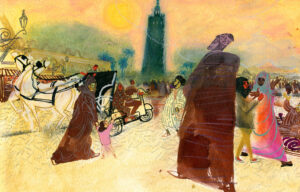 My brain is not what it used to be. Remind me again. What’s that term for a story that tells a story that tells a story that ends only when the innermost story doubles back and each tale is finished in turn? Is there a word such a thing? I suspect that the storytellers amongst us would know. The most obvious similarity to this book that comes to mind is, of course, the tale of Scheherazade. Indeed, the boy uses his stories to trick the djinn. And what could be a more natural comparison? In both tales it is storytelling that proves to be the saving of us all. Our thirst is quenched and we are tied to our history like never before. The obvious question then is whether or not Turk’s text is too complex for kids to follow. Sure, he distinguishes between the tales with different colored fonts, but will that be enough to allow them to remember what came before as they plunge deeper and deeper into the narrative? I think there may be some confusion at work, certainly. I wouldn’t necessarily hand this to a three or four-year-old. However, Turk’s text takes pains to remind the reader where the tale was before. The art helps as well. Confusion, such as it is, will be held to a minimum.
My brain is not what it used to be. Remind me again. What’s that term for a story that tells a story that tells a story that ends only when the innermost story doubles back and each tale is finished in turn? Is there a word such a thing? I suspect that the storytellers amongst us would know. The most obvious similarity to this book that comes to mind is, of course, the tale of Scheherazade. Indeed, the boy uses his stories to trick the djinn. And what could be a more natural comparison? In both tales it is storytelling that proves to be the saving of us all. Our thirst is quenched and we are tied to our history like never before. The obvious question then is whether or not Turk’s text is too complex for kids to follow. Sure, he distinguishes between the tales with different colored fonts, but will that be enough to allow them to remember what came before as they plunge deeper and deeper into the narrative? I think there may be some confusion at work, certainly. I wouldn’t necessarily hand this to a three or four-year-old. However, Turk’s text takes pains to remind the reader where the tale was before. The art helps as well. Confusion, such as it is, will be held to a minimum.
I first knew of Turk’s work when he illustrated Bethany Hegedus’s Grandfather Gandhi. In that book he integrated real spun cotton threads into the art, knowing full well the importance spinning had to Gandhi and his followers. In this book, weaving is the craft of choice so I wondered, not without reason, if woven threads would make their way into the art. As it happens, there are plenty of water-soluble crayons, colored drawing pencils, inks, indigo, sugared green tea, and even art created by heat gun and fire in the illustrations, but nothing so simple as thread. Turk mentions this on his publication page and he puts a little note to the reader there as well. It reads, “Look for a blue glimmer of hope to appear around each story!” and a small blue diamond appears. Naturally, I was curious so I looked. Sure as shooting, after each story’s text a diamond appears. However, as the stories appear within stories within stories, the diamonds grow more elaborate and decorative. Then, as the stories end one by one, the diamonds simplify once more. I began searching the art for more diamonds and here Turk doesn’t disappoint. If you look closely at the borders of the book, you see that the diamonds appear when there is hope and fade from blue to brown diamonds when hope dries up. As the storytelling increases the borders fill in more and more blue, just as the townspeople fill their fountains with bowl after bowl of water. Point out to a child reader the diamond motif and you are sure to be surprised by all that they find hidden in these pages.
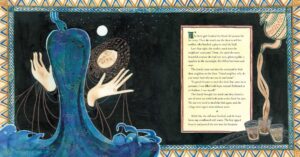 I should probably say something about Turk’s art itself. When I reviewed Grandfather Gandhi I had difficulty putting into words precisely what Turk does with his images. So I looked at the book’s professional reviews. His art causes reviewers to use terms like “dynamic visuals”, “stylized” and “strikingly patterned”. They say his art displays “bold, expressive imagery” or that he “mixes carefully detailed renderings with abstracted expressions of emotional struggle.” I agree with all of that but no one mentions his faces and hands. The patterns here are striking and upon closer inspection they yield such marvelous details it wouldn’t take much for this art to spin wildly out of control, opting for an abstract approach to the proceedings as a whole. Instead, Turk centers his art through the hands and faces of his characters. Look closely and you’ll see what I mean. The old storyteller’s hands are gnarled and wonderfully expressive, even as his audience of one clutches a single brass bowl. The hands of a cunning neighbor stroke her child as she schemes, while a princess, escaping on the night before her wedding, holds up her hennaed hands in despair. Hands. Heads. Hearts.
I should probably say something about Turk’s art itself. When I reviewed Grandfather Gandhi I had difficulty putting into words precisely what Turk does with his images. So I looked at the book’s professional reviews. His art causes reviewers to use terms like “dynamic visuals”, “stylized” and “strikingly patterned”. They say his art displays “bold, expressive imagery” or that he “mixes carefully detailed renderings with abstracted expressions of emotional struggle.” I agree with all of that but no one mentions his faces and hands. The patterns here are striking and upon closer inspection they yield such marvelous details it wouldn’t take much for this art to spin wildly out of control, opting for an abstract approach to the proceedings as a whole. Instead, Turk centers his art through the hands and faces of his characters. Look closely and you’ll see what I mean. The old storyteller’s hands are gnarled and wonderfully expressive, even as his audience of one clutches a single brass bowl. The hands of a cunning neighbor stroke her child as she schemes, while a princess, escaping on the night before her wedding, holds up her hennaed hands in despair. Hands. Heads. Hearts.
There’s been a lot of discussion lately about diversity in children’s literature. Specifically, some of that discussion has concerned those books written by white people about other cultures. It’s not a new phenomenon but what is a bit new is the increasing understanding that if you are going to use another culture, you need to do your homework. If, for example, you are setting a story in Morocco, then you need to make the readers understand why you made that choice. That it wasn’t arbitrary. This is yet another of the many reasons I’m so impressed with Turk’s work here. That he sets his story in Morocco (contemporary Morocco, by the look of it) is deeply purposeful. The Author’s Note at the end explains further. From this we learn that Morocco’s public storytellers or hlaykia have told tales for “nearly one thousand years” and yet “Only a handful of master storytellers remain”. All is not lost, though. Renewed interest in storytelling has surfaced, specifically at a restaurant called Café Clock in Marrakech. Turk then closes with a small Bibliography of sources on everything from storytelling to carpet weaving. The book then is not an appropriation of an “exotic” culture done on a whim but rather a considered, thoughtful selection that serves as an ideal setting for a tale about storytelling then, now, and in the future.
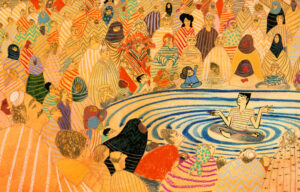 It was once part of a children’s librarian’s training to know how to tell a story from memory. Here in America it was even considered part of a children’s librarian’s heritage, though in the last few decades it has been fast forgotten. There are still pockets that remember, though. That’s why books like Turk’s give me the oddest little sense of hope. As I mentioned before, storytelling everywhere is seeing renewed interest. It seems odd to say, but this book, wrapped as it is in classic motifs and themes dating back hundreds, even thousands, of years, is one of the freshest, most timely picture books I’ve had the honor to read in a long time. Visually stunning with a storyline to match, Turk is beginning to make good on his talents. This is a man with storytelling in his blood and bones. Our children reap the rewards. A can’t miss book.
It was once part of a children’s librarian’s training to know how to tell a story from memory. Here in America it was even considered part of a children’s librarian’s heritage, though in the last few decades it has been fast forgotten. There are still pockets that remember, though. That’s why books like Turk’s give me the oddest little sense of hope. As I mentioned before, storytelling everywhere is seeing renewed interest. It seems odd to say, but this book, wrapped as it is in classic motifs and themes dating back hundreds, even thousands, of years, is one of the freshest, most timely picture books I’ve had the honor to read in a long time. Visually stunning with a storyline to match, Turk is beginning to make good on his talents. This is a man with storytelling in his blood and bones. Our children reap the rewards. A can’t miss book.
On shelves June 28th.
Source: F&G sent from publisher for review.
Like This? Then Try:
- Frederick by Leo Lionni
- Tell Me the Day Backwards by Albert Lamb, ill. David McPhail
- The Girl Who Saved Yesterday by Julius Lester, ill. Carl Angel
Misc:
See more images from the book here.

Jon Anderson, President and Publisher of the S&S Children's Division, has been at his job for seven years, but in the book business since high school—as a B Dalton bookseller!
At Simon & Schuster Jon presides over the nine different children's imprints, which publish for toddlers to teens: There is Little Simon, which is predominantly preschool/boardbooks, all the way up to Simon Pulse, which is the S&S teen imprint.
Jon says S&S has five publishers who oversee the nine children's imprints. Each imprint reflects the tastes of their individual editorial directors. The nine editorial directors also share a sales force and two marketing teams. The editorial directors are nine, living/normal human beings, not to be confused with any other famous group of nine, they are absolutely not Tolkienian ring-wraiths—could a person as delightful as someone like
Justin Chanda ever be allied with something as evil as Mordor? I don't think so.
 |
| Justin Chanda works for Jon, this is how he greets Jon at the office every day. |
Lin asks about the health of the market:
Jon says his adult colleagues are very jealous of the never-ending revenue stream that is a children's book publisher's backlist.
Lin asks for Jon's interpretation of the S&S mission statement and it is:
Do good books.
"We always look for quality first. We have a huge commitment to cover diversity with our books, cover all age ranges with our books."
All of the presidents/publishers on the panel ask for authors and illustrators to have realistic expectations in all areas of publishing: advance amounts, marketing, potential sales...
Jon mentions a surprise success story, a book that everyone on the publishing team loved, but was bought for not too much money (a realistic amount) as it was considered a bit of a niche book that would only reach a certain sales level. But
that book—look at all the awards it's got on its cover(!)—has gone on to sell over 200,000 copies.
How do you break in and/or succeed in a children's book career? Jon says attending events like this can help, not only because there are opportunities to learn about the craft and the competition, but to be in proximity to the industry professionals and gatekeepers. And at events like this, you are much more likely to meet those people in person in organic ways (unlike the less organic way of accosting an editor in a bathroom at a tradeshow like BEA).
Maybe, if there is time for Q&A, Jon will finally clear up the age-old riddle: Is this a picture of Simon? OR SCHUSTER?
.jpg?picon=107)
By:
Lizzy Burns,
on 11/12/2015
Blog:
A Chair, A Fireplace and A Tea Cozy
(
Login to Add to MyJacketFlap)
JacketFlap tags:
2015,
favorite books of 2015,
YA,
dystopia,
science fiction,
reviews,
simon and schuster,
Erin Bow,
Add a tag
The Scorpion Rules (Prisoners of Peace) by Erin Bow. Margaret K. McElderry Books, an imprint of Simon & Schuster Books. 2015. Review copy from publisher.
by Erin Bow. Margaret K. McElderry Books, an imprint of Simon & Schuster Books. 2015. Review copy from publisher.
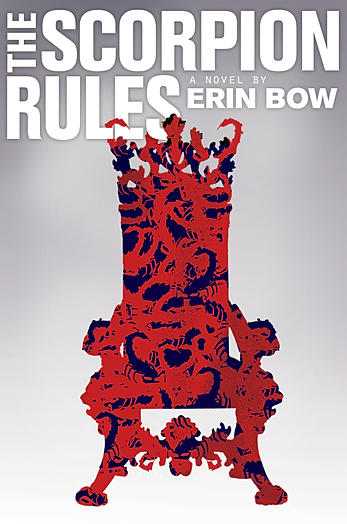
The Plot: Our world, about 400 years in the future. For various reasons (wars, water shortage, environmental changes) an AI (artificial intelligence) named Talis seized control of, well, everything, and first forced peace on the world by blasting a few cities.
Then Talis realized there was a better way. That destroying towns wouldn't create world peace. But hostages would. Child hostages, to be specific. It's simple: take a child of each leader. Hold onto them until they are 18. If the leader declares war, the child hostage's life is forfeit.
Greta Gustafsen Stuart is the Duchess of Halifax and the Crown Princess of Pan Polar Confederacy. She has been a hostage since the age of five. She is now sixteen; if she can make it until eighteen....
But her country has water. And others don't. And she knows that one day, sooner rather than later, war may be declared and her life may be forfeit.
The Good: Alright, let's cut to the chase: this is a Favorite Book of 2015. Hell, I'll go on record and say this is easily a top ten book. I'll go even further: I'll be damn disappointed if this isn't on awards lists and best lists at the end of the year.
And to say why this is so, why I am so passionate about this book, I'll be talking spoilers. So fair warning: stop now if that bothers you, read The Scorpion Rules, then come back.
The Scorpion Rules is a dystopia, or, at least, a dystopia for those children of rules and leaders who are sent away to be held hostage, knowing that if their parents pick country over blood they will die. They have been taught history to understand their role and their history, including ancient history to give a broader, perhaps colder, perspective on people and war and violence.
Greta, like her friends and fellow hostages, have been taught about their role; have been taught to accept it; have been taught to not fight back. To not resist. To not escape.
And then a boy comes to their school, a boy whose grandmother just gained power so he's been sent as hostage, a bit older than most, and less royal, so less prepared. Elian.
I KNOW WHAT YOU ARE GOING TO SAY IT'S JUST ANOTHER DYSTOPIAN ROMANCE BUT IT ISN'T. AND YES THERE IS A SECOND LOVE INTEREST BUT IT'S NOT A TRIANGLE JUST, WAIT.
Yes, it's dystopian; but like I said, at least for this book, it shifts the burden of the dystopia to the upper class, to the privileged. And the Children of Peace, the hostages, realize both their burden and their privilege. And it's grounded in real history -- the exchanging and taking of hostages has historic basis. (Fans of the TV show Reign will remember King Henry saying he and his brothers where hostages in the Spanish Court. That was true.) I say at least for this book, because we haven't seen much of life beyond where Greta lives, so I can't be sure of how others live. There is a hint that Talis controls and meddles with the lives of others, but it's unclear just how much of an impact that has.
This dystopia also makes sense; it's coherent, enough is given to explain why and how this system was accepted and evolved. It's also thoughtfully and realistically diverse. The Children of Peace come from all over the world, from all types of countries. Some, like Greta, are their for hereditary reasons -- she is the crown princess, born into this world, born to be a hostage. Others, like the Children from what was the United States, are there because parents have been voted into/taken charge by other means. They have no titles; they may arrive at the school older, with their status sudden and unprepared for. That is Elian.
And it's also grounded in science fiction, not fantasy -- the AI that controls the world, Talis, and the link between humans and computers is a scientific element of the story, not a fantastical one, and it's not just the push for the story. Talis is present throughout, lurking in the background, moving to the forefront.
Also, the threats are real. The Scorpion Rules starts with a child hostage being taken away because his country declared war. There is a graveyard by the school. There is torture, there is manipulation, not nice things happen again and again.
Now, on to the love triangle. Which isn't. There is new boy Elian and there is some sort of connection or attraction between him and Greta, but more important than that, is that Elian shows Greta another way. That submission and acceptance is not the only path in life. That no matter what, there is choice.
And then there is Greta's best friend and roommate, Xie. Greta has not just accepted the way she has been raised, the future she's been told to expect. She has also buried most of her emotions and feelings, avoiding emotional risk. And yet when Elian helps provide the catalyst for her to open up, and change, and question, it also helps her unlock her frozen feelings for Xie.
See? It sounds like a triangle because there are two people -- but it isn't. It so, so isn't.
One last thing: Greta may have accepted her part in life and politics; she may have tried to avoid certain deep attachments; but she is also a royal. Born to be a hostage, born to live a role, but also born to take her place if she lives past 18. Born to be a leader, and at her school, she is a leader. She's not a follower. She's not passive, even if to someone like Elian, the Children of Peace hostages look passive and accepting.
So, go, read it, and like me, look forward to the next book. Because I have no idea what will happen next -- and that? That is a great feeling to have.
Amazon Affiliate. If you click from here to Amazon and buy something, I receive a percentage of the purchase price.
© Elizabeth Burns of A Chair, A Fireplace & A Tea Cozy


Simon & Schuster has acquired a book from Steve Case, co-founder of America Online (AOL) and the Chairman and CEO of DC-based investment firm Revolution.
In the book, entitled, The Third Wave, Case will give his inside story of the largest merger in history between AOL and Time Warner, and what he learned from it all. The work will also look at the so-called third wave of the Internet, a post-Facebook, post-Google, post-SnapChat world, “a period in which entrepreneurs will vastly transform major ‘real world’ sectors like health, education, transportation, energy, food and even traditional ‘bricks and mortar’ retailers―and in the process change the way we live our daily lives.”
The book is slated for worldwide publication in April 2016. An audio edition will also be released simultaneously by Simon & Schuster Audio.

By:
Becky Laney,
on 10/26/2015
Blog:
Becky's Book Reviews
(
Login to Add to MyJacketFlap)
JacketFlap tags:
Simon and Schuster,
YA nonfiction,
verse novel,
j nonfiction,
mg nonfiction,
library book,
2015,
books reviewed in 2015,
Nonfiction,
autobiography,
memoirs,
Add a tag
Enchanted Air. Margarita Engle. Illustrated by Edel Rodriguez. 2015. Simon & Schuster. 208 pages. [Source: Library]
Did I enjoy Margarita Engle's Enchanted Air? A thousand times yes! I don't remember when I first discovered Engle's verse novels, I just remember it was love at first sight from the first book on. Every novel of hers which I've read, I've ended up absolutely loving. I really should treat myself to rereading all of her novels.
Enchanted Air is the author's memoir of her first fourteen years. It is all in verse; wonderful, glorious verse as only she can write. She writes of her travels back and forth from the United States and Cuba. (In addition to writing about other family travels, vacations, if you will.) She writes of various moves within the U.S, all in California, I believe. She writes of summer days and school days. Of belonging, wanting to belong, needing to belong. Of uncertainty, confusion, and on the opposite extreme: JOY. Joy of knowing, of discovering, of loving, of living, of just being. The focus is on herself and on her family. She grew up during the "Cold War." And she shares with readers her experiences; how upsetting and confusing it could be to grow up Cuban American at a time when Cuba was very much THE ENEMY. She also writes about her love of reading, writing, and storytelling.
From "Learning" (p. 134)
At home, I scribble tiny poems
all over the walls of my room.
Inside those miniature verses,
I feel safe, as if I am a turtle,
and the words
are my shell.
"More and More Stories" (p. 82
I find it hard to believe
that I am surviving
a whole summer
without a library
for finding
the familiar
old magic
of books.
But storytelling seems
like magic too--a new form
that is also
ancient
at the same time.
Will I ever be brave enough
to tell old-new tales
in my own way?
From "Refuge" (p. 54)
When I climb a tree, I take a book with me.
When I walk from school, I carry
my own poems, inside my mind,
where no one else
can reach the words
that are entirely
completely
forever
mine.
© 2015 Becky Laney of
Becky's Book Reviews

By:
Betsy Bird,
on 8/25/2015
Blog:
A Fuse #8 Production
(
Login to Add to MyJacketFlap)
JacketFlap tags:
Reviews,
middle grade fiction,
middle grade,
Simon and Schuster,
Best Books,
Kenneth Oppel,
Jon Klassen,
scary books for kids,
Best Books of 2015,
Reviews 2015,
2015 reviews,
2015 middle grade novels,
Add a tag
 The Nest
The Nest
By Kenneth Oppel
Illustrated by Jon Klassen
Simon & Schuster Books for Young Readers
$16.99
ISBN: 978-1-4814-3232-0
On shelves October 6th
Oh, how I love middle grade horror. It’s a very specific breed of book, you know. Most people on the street might think of the Goosebumps books or similar ilk when they think of horror stories for the 10-year-old set, but that’s just a small portion of what turns out to be a much greater, grander set of stories. Children’s book horror takes on so many different forms. You have your post-apocalyptic, claustrophobic horrors, like Z for Zachariah by Robert C. O’Brien. You have your everyday-playthings-turned-evil tales like Doll Bones by Holly Black. You have your close family members turned evil stories ala Coraline by Neil Gaiman and Wait Till Helen Comes by Mary Downing Hahn. And then there are the horror stories that shoot for the moon. The ones that aren’t afraid (no pun intended) to push the envelope a little. To lure you into a false sense of security before they unleash some true psychological scares. And the best ones are the ones that tie that horror into something larger than themselves. In Kenneth Oppel’s The Nest, the author approaches us with a very simple idea. What if your desire to make everything better, everyone happier, released an unimaginable horror? What do you do?
New babies are often cause for true celebration, but once in a while there are problems. Problems that render parents exhausted and helpless. Problems with the baby that go deep below the surface and touch every part of your life. For Steve, it feels like it’s been a long time since his family was happy. So when the angels appear in his dream offering to help with the baby, he welcomes them. True, they don’t say much specifically about what they can do. Not at the beginning, but why look a gift horse in the mouth? Anyway, there are other problems in Steve’s life as well. He may have to go back into therapy, and then there are these wasps building a nest on his house when he’s severely allergic to them. A fixed baby could be the answer to his prayers. Only, the creatures visiting him don’t appear to be angels anymore. And when it comes to “fixing” the baby . . . well, they may have other ideas entirely . . .
First and foremost, I don’t think I can actually talk about this book without dusting off the old “spoiler alert” sign. For me, the very fact that Oppel’s book is so beautifully succinct and restrained, renders it impossible not to talk about its various (and variegated) twists and turns. So I’m going to give pretty much everything away in this review. It’s a no holds barred approach, when you get right down to it. Starting with the angels of course. They’re wasps. And it only gets better from there.
It comes to this. I’ve no evidence to support this theory of mine as to one of the inspirations for the book. I’ve read no interviews with Oppel about where he gets his ideas. No articles on his thought processes. But part of the reason I like the man so much probably has to do with the fact that at some point in his life he must have been walking down the street, or the path, or the trail, and saw a wasp’s nest. And this man must have looked up at it, in all its paper-thin malice, and found himself with the following inescapable thought: “I bet you could fit a baby in there.” And I say unto you, it takes a mind like that to write a book like this.
Wasps are perhaps nature’s most impressive bullies. They seem to have been given such horrid advantages. Not only do they have terrible tempers and nasty dispositions, not only do they swarm, but unlike the comparatively sweet honeybee they can sting you multiple times and never die. It’s little wonder that they’re magnificent baddies in The Nest. The only question I have is why no one has until now realized how fabulous a foe they can be. Klassen’s queen is particularly perfect. It would have been all too easy for him to imbue her with a kind of White Witch austerity. Queens come built-in with sneers, after all. This queen, however, derives her power by being the ultimate confident. She’s sympathetic. She’s patient. She’s a mother who hears your concerns and allays them. Trouble is, you can’t trust her an inch and underneath that friendliness is a cold cruel agenda. She is, in short, my favorite baddie of the year. I didn’t like wasps to begin with. Now I abhor them with a deep inner dread usually reserved for childhood fears.
I mentioned earlier that the horror in this book comes from the idea that Steve’s attempts to make everything better, and his parents happier, instead cause him to consider committing an atrocity. In a moment of stress Steve gives his approval to the unthinkable and when he tries to rescind it he’s told that the matter is out of his hands. Kids screw up all the time and if they’re unlucky they screw up in such a way that their actions have consequences too big for their small lives. The guilt and horror they sometimes swallow can mark them for life. The queen of this story offers something we all can understand. A chance to “fix” everything and make the world perfect. Never mind that perfect doesn’t really exist. Never mind that the price she exacts is too high. If she came calling on you, offering to fix that one truly terrible thing in your life, wouldn’t you say yes? On the surface, child readers will probably react most strongly to the more obvious horror elements to this story. The toy telephone with the scratchy voice that sounds like “a piece of metal being held against a grindstone.” The perfect baby ready to be “born” The attic . . . *shudder* Oh, the attic. But it’s the deeper themes that will make their mark on them. And on anyone reading to them as well.
There are books where the child protagonist’s physical or mental challenges are named and identified and there are books where it’s left up to the reader to determine the degree to which the child is or is not on such a spectrum. A book like Wonder by R.J. Palacio or Out of My Mind by Sharon Draper will name the disability. A book like Emma-Jean Lazarus Fell Out of a Tree by Lauren Tarshis or Counting by 7s by Holly Sloan won’t. There’s no right or wrong way to write such books, and in The Nest Klassen finds himself far more in the latter rather than former camp. Steve has had therapy in the past, and exhibits what could be construed to be obsessive compulsive behavior. What’s remarkable is that Klassen then weaves Steve’s actions into the book’s greater narrative. It becomes our hero’s driving force, this fight against impotence. All kids strive to have more control over their own lives, after all. Steve’s O.C.D. (though it is never defined in that way) is part of his helpless attempt to make things better, even if it’s just through the recitation of lists and names. At one point he repeats the word “congenital” and feels better, “As if knowing the names of things meant I had some power over them.”
When I was a young adult (not a teen) I was quite enamored of A.S. Byatt’s book Angels and Insects. It still remains one of my favorites and though I seem to have transferred my love of Byatt’s prose to the works of Laura Amy Schlitz (her juvenile contemporary and, I would argue, equivalent) there are elements of Byatt’s book in what Klassen has done here. His inclusion of religion isn’t a real touchstone of the novel, but it’s just a bit too prevalent to ignore. There is, for example, the opening line: “The first time I saw them, I thought they were angels.” Followed not too long after by a section where Steve reads off every night the list of people he wants to keep safe. “I didn’t really know who I was asking. Maybe it was God, but I didn’t really believe in God, so this wasn’t praying exactly.” He doesn’t question the angels of his dreams or their desire to help (at least initially). And God makes no personal appearance in the novel, directly or otherwise. Really, when all was said and done, my overall impression was that the book reminded me of David Almond’s Skellig with its angel/not angel, sick baby, and boy looking for answers where there are few to find. The difference being, of course, the fact that in Skellig the baby gets better and here the baby is saved but it is clear as crystal to even the most optimistic reader that it will never ever been the perfect baby every parent wishes for.
It’s funny that I can say so much without mentioning the language, but there you go. Oppel’s been wowing folks with his prose for years, but that doesn’t mean you can’t enjoy a cunning turn of phrase when you encounter it. Consider some of his lines. The knife guy is described like “He looked like his bones were meant for an even bigger body.” A description of a liquid trap for wasps is said to be akin to a, “soggy mass grave, the few survivors clambering over the dead bodies, trying in vain to climb out. It was like a vision of hell from that old painting I’d seen in the art gallery and never forgotten.” Or what may well be my favorite in the book, “… and they were regurgitating matter from their mouths and sculpting it into baby flesh.” And then there are the little elements the drive the story. We don’t learn the baby’s name until page 112. Or the very title itself. When Vanessa, Steve’s babysitter, is discussing nests she points out that humans make them as well. “Our houses are just big nests, really. A place where you can sleep and be safe – and grow.”
The choice of Jon Klassen as illustrator is fascinating to me. When I think of horror illustrations for kids the usual suspects are your Stephen Gammells or Gris Grimleys or Dave McKeans. Klassen’s different. When you hire him, you’re not asking him to ratchet up the fear factor, but rather to echo it and then take it down a notch to a place where a child reader can be safe. Take, for example, his work on Lemony Snicket’s The Dark A book where the very shadows speak, it wasn’t that Klassen was denying the creepier elements of the tale. But he tamed them somehow. And now that same taming sense is at work here. His pictures are rife with shadows and faceless adults, turned away or hidden from the viewer (and the viewer is clearly Steve/you). And his pictures do convey the tone of the book well. A curved knife on a porch is still a curved knife on a porch. Spend a little time flipping between the front and back endpapers, while you’re at it. Klassen so subtle with these. The moon moves. A single light is out in a house. But there’s a feeling of peace to the last picture, and a feeling of foreboding in the first. They’re practically identical so I don’t know how he managed that, but there it is. Honestly, you couldn’t have picked a better illustrator.
Suffice to say, this book would probably be the greatest class readaloud for fourth, fifth, or sixth graders the world has ever seen. When I was in fourth grade my teacher read us The Wicked Wicked Pigeon Ladies in the Garden by Mary Chase and I was never quite the same again. Thus do I bless some poor beleaguered child with the magnificent nightmares that will come with this book. Added Bonus for Teachers: You’ll never have to worry about school attendance ever again. There’s not a chapter here a kid would want to miss.
If I have a bone to pick with the author it is this: He’s Canadian. Normally, this is a good thing. Canadians are awesome. They give us a big old chunk of great literature every year. But Oppel as a Canadian is terribly awkward because if he were not and lived in, say, Savannah or something, then he could win some major American children’s literary awards with this book. And now he can’t. There are remarkably few awards the U.S. can grant this tale of flying creepy crawlies. Certainly he should (if there is any justice in the universe) be a shoo-in for Canada’s Governor General’s Award in the youth category and I’m pulling for him in the E.B. White Readaloud Award category as well, but otherwise I’m out to sea. Would that he had a home in Pasadena. Alas.
Children’s books come with lessons pre-installed for their young readers. Since we’re dealing with people who are coming up in the world and need some guidance, the messages tend towards the innocuous. Be yourself. Don’t judge a book by its cover. Friendship is important. Etc. The message behind The Nest could be debated ad nauseam for quite some time, but I think the thing to truly remember here is something Steve says near the end. “And there’s no such thing as normal anyways.” The belief in normality and perfection may be the truest villain in The Nest when you come right down to it. And Klassen has Steve try to figure out why it’s good to try to be normal if there is no true normal in the end. It’s a lesson adults have yet to master ourselves. Little wonder that The Nest ends up being what may be the most fascinating horror story written for kids you’ve yet to encounter. Smart as a whip with an edge to the terror you’re bound to appreciate, this is a truly great, truly scary, truly wonderful novel.
On shelves October 6th.
Source: Galley sent from publisher for review.
Like This? Then Try:
Professional Reviews: A star from Kirkus,

Henry and Mudge and the Happy Cat. (Henry and Mudge #8) Cynthia Rylant. Sucie Stevenson. 1990. Simon & Schuster. 48 pages. [Source: Bought]
One night Henry and Henry's father and Henry's big dog Mudge were watching TV.I enjoyed reading Henry and Mudge and the Happy Cat. I don't remember ever having read any titles in the Henry and Mudge series. So this was my first. My first impressions of the series are good, I think.
Henry's family takes in a stray cat; this stray cat is unique looking: it looks like mashed prunes. The family is happy to take the cat in--for a few days, a few weeks. But because having Mudge is like having five dogs--that they can't take the cat into their home permanently.
The first chapter is about taking the stray cat into their home. The second chapter is about how happy the cat is in her new home, and, how much Mudge loves being mothered by the cat. Essentially the family does come to like the cat. The third chapter is "bittersweet" I suppose. The cat's original owner is found, and the two are reunited. But Henry's family misses the cat.
In one week the shabby cat had become Mudge's mother. It washed Mudge all the time. It washed Mudge's ears. It washed Mudge's eyes. It even washed Mudge's dirty feet.
Have you read the Henry and Mudge series? Do you have a favorite title?
© 2015 Becky Laney of
Becky's Book Reviews
To All The Boys I've Loved Before. Jenny Han. 2014. Simon & Schuster. 288 pages. [Source: Library]
I enjoyed rereading Jenny Han's To All The Boys I've Loved Before. I wanted to reread the book because the second book is finally available. I wanted to reconnect with Lara Jean and Peter.
Did I enjoy it as much the second time around? Probably not. Oh, I still liked it a lot. I did. I loved some scenes very much. I like having Peter hang out with Lara Jean and Kitty and her Dad. And the Christmas cookie scene is still very fun. But I noticed myself being more intolerant and less forgiving of some of the other characters. For example, Lara Jean's friend, Chris. For some reason, I was annoyed by every single scene with her in it. And I don't remember feeling that annoyed the first time around! Josh also annoyed me more the second time around.
So I am glad I read it. But I didn't find it as delightful and surprising as the first time around. Some books are like that though. I am still looking forward to reading the second book.
© 2015 Becky Laney of
Becky's Book Reviews

By:
Becky Laney,
on 7/2/2015
Blog:
Becky's Book Reviews
(
Login to Add to MyJacketFlap)
JacketFlap tags:
Simon and Schuster,
MG Fiction,
library book,
MG Realistic Fiction,
family,
friendship,
J Fiction,
J Realistic Fiction,
2015,
2015 Cybils-eligible,
books reviewed in 2015,
Summer,
Add a tag
The Great Good Summer. Liz Garton Scanlon. 2015. Simon & Schuster. 224 pages. [Source: Library]
God is alive and well in Loomer, Texas, so I don't know why Mama had to go all the way to The Great Good Bible Church of Panhandle Florida to find him, or to find herself, either. The Great Good Summer reminded me, in a way, of Because of Winn Dixie. Ivy Green is almost as lovable a heroine as Opal herself. Her narrative voice is certainly strong throughout. Ivy's narration made the novel work well for me.
So Ivy's story, on the surface, is simple: her mom has recently left them (her and her dad) without a word as to where she's going and if she'll ever be back. Ivy and her Dad struggle with their new reality. Some things remain the same: Ivy's babysitting, weekly attendance at church; but some things are VERY different: her mom being gone, her never-subsiding-ache of wanting her mom back, her new friendship with a boy, Paul Dobbs, who most decidedly does NOT believe in God.
One of the book's greatest strengths is in the writing itself:
But the thing is, ideas are my talent. My only talent, really. My voice isn't right for singing, I freeze up in the spelling bee, and I can't shoot a basket to save my life. If I stop coming up with ideas, I'm not gonna have anything left to do or talk about. (5)
Personally, I think if you're an only child, you should automatically be issued a dog when you're born, as a consolation prize, but my mama and daddy disagree. (6)
"Daddy, what are we gonna say when people ask us about Mama?" I stir my bowl of milk. Daddy's right. I'm dawdling. "The truth, baby. They're church folks. Church folks understand other church folks." (23)
Paul isn't a redhead like his mama and sister, and he isn't exactly distinguished-looking either, but he is nice to look at. For a boy that I'm always getting a little mad at, I mean. (44)
I do find it interesting that faith in God is such a big part of this book. Not every character even believes in God. As I mentioned, Paul doesn't. And he challenges Ivy in several scenes, for better or worse. Why do you believe in a God you can't even see? Why do you think there is a God in the first place? How do you know he's real? Why aren't you more skeptical? But there are a handful of characters that do believe in God that do define themselves by their faith in God. And Ivy herself as emotional as she is, as angry as she becomes, does still believe in God.
Does the book get Christianity right? That's hard to say in a way. If your impression of Christianity is that it is a do religion: a do this, this, this, and that religion--a religion defined by things you do and things you don't do--I'm not sure there is enough gospel, enough grace, in The Great Good Summer to change that impression. If you (rightly) hold that Christianity is a done religion: what Christ has done for us, on our behalf, the price he paid to redeem us, to deliver us, then there aren't any passages that scream out heresy either. Though this passage makes me sad:
I hope you can forgive me sometime, Ivy. In the meantime I have to work on forgiving myself. And then it's up to God. That's the really awful thing about this whole mess--I was just trying to get closer to God, which makes it even bigger shame that I messed up as badly as I did." (183)
There were so many things I wanted to say to them both. Like it isn't about trying: trying to be better, or trying to do more. It's about trusting in what God has already done. It's about trusting that Jesus is enough. That God could not love you more than he already does. That he could not love you less either. That he really and truly has paid it all.
I didn't quite love, love, love this one. But it certainly was worth reading.
© 2015 Becky Laney of
Becky's Book Reviews
Grump. Janet Wong. Illustrated by John Wallace. 2001. Simon & Schuster. 32 pages. [Book I Bought]
Look how tired this Mommy isTired and frumpyGrouchy chumpyOh, what a grump!
Look at BabySmart, good BabyHappy BabyMaking gravyApplesauce and ketchup gravyNot too lumpyNot too bumpySquish squishDUMP!Grump is one of my favorite, favorite, favorite books. I almost don't even need to make the qualification of favorite
picture book. It's a book that begs to be read aloud again and again and again. The rhythm of it is almost magical--at least to me! I love the use of language, I do. I love the way it sounds, the way it feels on my tongue. It's real life. It's poetry. It just works.
The story of this one is simple. It's been a LONG, LONG, LONG day for this Mom and her Baby. And even if the Baby doesn't think he needs a nap, he needs a nap. But will this baby go down for a nap? Not without an all-too-familiar-struggle!
Baby's going to take a nap nowBaby's going to take a nap nowBaby's going to take a nap nowTake a nap nowLittle lump.She puts him in his crib and...
And oh of course that baby criesCries and whimpersCries and whimpersCries and whimpersPlay with me!So Mommy sits And reads to BabyReads so prettyReads so softlyReads and reads and reads until--Can you guess what happened to the oh-so-tired, oh-so-grumpy Mommy?
This one is such a GREAT book. I loved how true-to-life it was. Not only for the baby, not only for the mommy--but it captures the ups and downs of the whole relationship.
This one has been a favorite going on ten years. Today I was looking to review some board books, hoping to find something great to share with you, when I thought again of Grump. Why isn't Grump still in print? Why hasn't it been reprinted? Why??? It's just a WONDERFUL book. And it would be a great board book!!! The combination of this story with that format would be just perfect!!!!
Text: 5 out of 5
Illustrations: 4 out of 5
Total: 9 out of 10
© 2015 Becky Laney of
Becky's Book Reviews
Follow Your Gut. Rob Knight with Brendan Buhler. 2015. Simon & Schuster (TED) 128 pages. [Source: Library]
Just how much microscopic life dwells inside you? If we're going by weight, the average adult is carrying about three pounds of microbes. Follow Your Gut
is reader-accessible science. The book is packed with information--what we know
for sure, what we
think we know, how much we just don't know quite yet, what we still need to spend time researching. The focus of the book is on microbes: the microbes living in us and on us. How every individual has their own unique combination of microbes. Our microbes can tell scientists where we live and how we live. Most of the book focuses on the microbes living in our guts. The book seeks to convey HOW VERY, VERY, VERY important it is to have good microbes in our gut. How essential gut health is to overall health, but, especially brain health.
Table of contents:
- The body microbial
- How we get our microbiome
- In sickness and in health
- The gut-brain axis
- Hacking your microbiome
- Antiobiotics
- The future
The book is packed with (basic) information. And I think it's information that should be more well known. I think knowledge is the first step, a good solid step in the right direction. I do wish the book was slightly more practical. Yes, it's good to know what microbes do or might do. But which strains of microbes are best for dealing with specific health issues? And how can one add/change one's microbes?!
© 2015 Becky Laney of
Becky's Book Reviews

By:
Becky Laney,
on 6/18/2015
Blog:
Becky's Book Reviews
(
Login to Add to MyJacketFlap)
JacketFlap tags:
family,
J Fiction,
Simon and Schuster,
MG Fiction,
library book,
mg historical,
j historical,
2015,
2015 Cybils-eligible,
books reviewed in 2015,
Add a tag
Stella by Starlight. Sharon M. Draper. 2015. Simon & Schuster. 336 pages. [Source: Library]
Nine robed figures dressed all in white. Heads covered with softly pointed hoods. Against the black of night, a single wooden cross blazed. Reflections of peppery-red flames shimmered across the otherwise dark surface of Kilkenny Pond. Stella by Starlight is set in Bumblebee, North Carolina, in the fall of 1932. What can I say about this one? I could say many things, but, I'll start with this: I LOVED, LOVED, LOVED IT.
I loved the narration. I loved the heroine, Stella, she makes a remarkable narrator. I loved her voice and her spirit. I loved the characterization--it was rich. I loved meeting Stella and her brother, Jojo. I loved her parents. I loved getting to know her neighbors. I loved that we get a real sense of community and place. It was the kind of novel that is completely absorbing--compelling. I loved the drama and the intensity. Stella by Starlight is what happens in one community after three African-American men decide to register to vote. The book captures why the men chose to act, what voting meant to them, what it represented. The book captures what it meant to their families and the community as well. Stella knows, for example, that it is a courageous act for her father, and, a necessary one as well. She's proud of her father for doing what he feels is right--knows is right. But Stella also knows a healthy-fear of the KKK. The book captures that uncertainty, that fear, it brings the community together as one. I also loved the religious/spiritual aspects of this one: how central the church is, how central the Christian faith is in the community. It celebrates faith, and shows it to be a powerful force. Stella by Starlight is beautifully written. I highly recommend it!
© 2015 Becky Laney of
Becky's Book Reviews
The Trumpeter of Krakow. Eric P. Kelly. 1928. Simon & Schuster. 208 pages. [Source: Library]
It was in late July of the year 1461 that the sun rose one morning red and fiery as if ushering in midsummer's hottest day. His rays fell upon the old city of Krakow and the roads leading up to it, along which rolled and rocked a very caravan of peasants' wagons. In the summer of 2011, I read and reviewed Eric P. Kelly's
The Trumpeter of Krakow. I remember really enjoying it though I found it plot-driven instead of character driven. Because I had good memories of reading it, I thought I would reread it for Hope Is the Word's
Newbery Through the Decades. Unfortunately, I didn't end up enjoying it as much as I did the first time.
I'm not sure if this was because I wasn't in the right mood for this one. Or if it was because since I knew how it ended there just wasn't enough to keep me reading.
The first time I read it: action, mystery, suspense, what will happen next?!
The second time I read it: this is boring, so boring, when will I get to the good part?
I was surprised by my own reaction this time since in my review, I wrote "There is never a dull moment in The Trumpeter of Krakow" and "The novel is exciting."
© 2015 Becky Laney of
Becky's Book Reviews
Cartwheeling in Thunderstorms. Katherine Rundell. 2014. Simon & Schuster. 256 pages. [Source: Library] Mild spoilers.
The heroine of Cartwheeling in Thunderstorms is a girl named Will Silver (full name Wilhelmina, don't dare call her Wilhelmina though!). Will loves living on a farm in Zimbabwe. Her father doesn't own the farm--Captain Browne does--but he manages it. She can't remember her mother, but, life there with her father and her friends (mostly farm workers and local boys) and her animals is near perfect. Until her father dies from malaria. Just like her mother.
After his death, Captain Browne is her legal guardian. The problem? Well, this older gentlemen has fallen head over heels in love with a horrible woman with an evil plan. At least that's how Will sees it. Will soon finds herself heading off to England and boarding school. The situation seems bleak. And it is. And I think that's one reason why I didn't exactly love Cartwheeling in Thunderstorms. It is a bleak middle grade read with little hope. I like hope. I need hope. Will finds herself in dozens of desperate situations, and, it doesn't get better, it just ends. True to life? Probably. Is it important to be true to life and authentic? Sure.
Will is displaced. She's out of her element in England and at school. She's never interacted with girls her own age. She's never formally attended school. She's never had to follow rules. So she struggles with EVERYTHING. For example, she struggles with the concept of staying inside, staying inside classrooms and buildings during school, of staying in her room at night and sleeping. She can't understand why no one will let her sleep outside wherever she wants whenever she wants. She can't understand why no one wants to be near her despite the fact that she hasn't changed clothes or taken a bath or washed her hair or even brushed her hair in three weeks or so. She gets angry when people tell her to use a fork and knife to eat. So it's an understatement to say she's out of her element.
The book is interesting enough, I suppose. But I didn't really enjoy it very much.
© 2015 Becky Laney of
Becky's Book Reviews
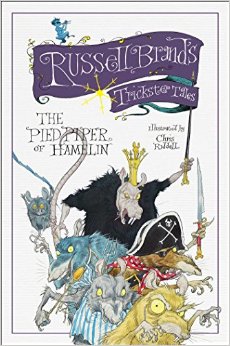 Russell Brand’s Trickster Tales: The Pied Piper of Hamelin
Russell Brand’s Trickster Tales: The Pied Piper of Hamelin
By Russell Brand
Illustrated by Chris Riddell
Atria Books (a division of Simon & Schuster)
$19.99
ISBN: 978-1-4767-9189-0
On shelves now.
If there is a trend to be spotted amongst the celebrity children’s books being released these days then I think it boils down to a general perception on their part that books for kids aren’t subversive enough. This is a bit of a change of pace from the days when Madonna would go about claiming there weren’t any good books for kids out there. Celebrities are a bit savvier on that count, possibly because the sheer number of books they publish has leapt with every passing year. Now their focus has changed. Where once they pooh-poohed the classics, now they’re under the impression that in spite of masters like Shel Silverstein, Jon Scieszka, Tomi Ungerer, and the like, books for kids are just a little too sweet. Time to shake things up a bit. At least that’s the only reason I can think of to justify what Russell Brand has done here. When I heard that he had a new series out called Russell Brand’s Trickster Tales I admit that I was intrigued. Tricksters! What’s not to love there? Plus the man has talent and imagination. This kind of thing would really work. Add in the art of Chris Riddell and you might have something clever and worth reading on your shelf. I probably could have continued thinking in this manner if I hadn’t made the mistake of going so far as to actually read the book. Oh me oh my oh me oh my. In this, the first book in his series, Brand goes headlong in the wrong direction. Needlessly violent, humorlessly scatological, with really weird messages about disability and feminism thrown in for no particular reason, you can say lots of things about Brand’s foray in to the world of children. One thing you cannot say is that it’s actually for kids.
You think you know the story of The Pied Piper? Think again. In the town of Hamelin, the children are the future. Which is to say, the pretty children are the future. Kids like Sam, a child born with a withered leg, are ostracized and have to avoid being chased by the other kids’ zombie roadkill robots and such. The adults are little better with their misspent love of physical perfection and money. To this sordid town comes a hoard of nasty rats, each worse than the last and within a short amount of time they take over everything. As you might imagine, when a mysterious Piper arrives offering to do away with the hoard the townspeople agree immediately. He does but when he comes for his payment the town turns on him, rejecting his price. In response he takes away the kids, all but Sam, who is allowed to stay because he’s a different kind of kid. A good one.
Before any specific objections can be lobbed in the book’s general direction, I think the important thing to note from the start is that this isn’t actually a book for kids. It’s not published by a children’s book publisher (Atria Books is a division of Simon & Schuster, and does not generally do books for kids). Its author is not a children’s book author. And the writing is clearly for adults. When I read the review in Kirkus of this book I saw that it called it, “A smart, funny, iconoclastic take on an old classic,” and recommended it for kids between the ages of 8-12. Now look here. I like books that use high vocabularies and complex wordplay for children. You betcha. I also like subversive literature and titles that push the envelope. That’s not what this book is. In this book, Brand is basically just throwing out whatever comes to mind, hoping that it’ll stick. Here’s a description of the leader of the rats: “Even though they called themselves an anarcho-egalitarian rat collective (that means there’s no rules and no one’s in charge), in reality Casper was in charge . . . In his constant attendance were a pair of ratty twins – Gianna and Paul – who were both his wives. In anarcho-egalitarian rat-collectives, polygamy (more than one wife) is common. It’s not as common for one of the wives to be male but these rats were real badasses.” It’s not just the content but the tone of this. Brand is speaking directly to an adult audience. He does not appear to care one jot about children.
Of course when Brand decides to remember that he is writing a children’s book, that’s when he makes the story all about poop. Huge heaping helpfuls of it. There’s a desperation to his use of it, as if he doesn’t trust that a story about disgusting rats infesting a town is going to be interesting to kids unless it’s drowning in excrement as well. Now poop, when done well, is freakin’ hilarious. Whether we’re talking about Captain Underpants or The Qwikpick Adventure Society, poop rules. But as the authors of those books knew all too well, a little goes a long way. Fill your book with too much poop and it’s like writing a book filled with profanity. After very little time the shock of it just goes away and you’re left feeling a bit bored.
Other reasons that this ain’t a book for kids? Well, there’s the Mayor for one. Brand attempts to curtail criticism of his view of this woman by creating a fellow by the name of Sexist Bob. See, kids? Bob is sexist so obviously Brand can’t be. Not even when he has the Mayor crying every other minute, being described as a spinster who was mayor “a high-status job that made her feel better about her knees and lack of husband.” Then there’s the world’s weirdest message about disability. Our hero is Sam, the sole child left in the city of Hamelin after the children are whisked away. He’s the one described as having a “gammy leg all withered like a sparrow’s”. Which is fine and all, but once you get to the story’s end you find that Sam gets to have a happy ending where he’s grows up to become Hamelin’s mayor and his disability is pretty much just reduced a slight limp. So if you’re a good person, kiddos, that nasty physical problem you suffered from will go away. Better be good then. Sheesh.
Now Chris Riddell’s a funny case here. He’s a great artist, first and foremost. Always has been. Though I feel like he’s never been properly appreciated here in America, every book he’s done he puts his all into. Riddell doesn’t phone it in. So when he commits to a book like The Pied Piper then he commits, by gum. For better or for worse. Honestly, Brand must have thought he died and went to heaven when they handed him an artist willing to not only portray drops of blood dripping from a child’s pierced nipple but robot gore-dripping animal corpses and sheer amounts of poo. In this book he really got into his work and I began to wonder how much of a direct hand Brand had. Did Brand tell Riddell to make the Piper look like a member of the film version of A Clockwork Orange? No idea. Whatever the case, Riddell is as much to blame for some aspects of the book (the Mayor’s mascara comes to mind) as Brand, but he also is able to put in little moments of actual emotion. There’s a shot of Sam hugged by his mother early in the book that’s far and away one of the most touching little images you ever will see. Just the sweetest thing. Like a little light bobbing in the darkness.
The kicker is that beneath the lamentably long page count and gross-out factors, there might have been a book worth reading here. Playing the old “blame the editor” game is never fair, though. Editors of celebrity children’s books are, by and large, consigned there because they performed some act of carnage in a previous life and must now pay penance. No one goes into the business saying to themselves, “But what I’d really like to do is edit a picture book by Howard Stern’s wife about a fat white cat.” And so we cannot know how much input the editor of this book was allowed to give. Perhaps Brand took every note he was handed and hammered and sawed this book into its current state. Or maybe he was never handed a single suggestion and what he handed in is what we see here. No idea. But it’s difficult not to read the book and wonder at what might have been.
It’s more ambitious than your average celebrity children’s book, I’ll grant you that. And yet it feels like nothing so much as a mash-up of Roald Dahl and Andy Griffiths for adults. Lacking is the kid-appeal, the tight editing, and the reason why we the readers should really care. Our hero Sam is the hero because he’s essentially passive and doesn’t much act or react to the events going on in the tale. The Piper is there to teach a town a lesson, does so, and the story’s over. Brand would rather luxuriate in nasty kids, adults, and rats then take all that much time with his rare decent characters. As a result, it’s a book that might have been quite interesting and could even have been for actual children but in the end, isn’t. Here’s hoping Mr. Brand’s future forays in storytelling don’t forget who the true audience really is.


By:
Becky Laney,
on 11/2/2014
Blog:
Becky's Book Reviews
(
Login to Add to MyJacketFlap)
JacketFlap tags:
2014,
picture books,
Christmas,
Simon and Schuster,
Candlewick,
Penguin USA,
review copy,
library book,
Lerner,
books reviewed in 2014,
Add a tag
Santa Clauses: Short Poems From the North Pole by Bob Raczka. 2014. Lerner Publishing Group. 32 pages. [Source: Library]December 1rst
Wishes blowing in
from my overfilled mailbox--
December's first storm. I enjoyed reading Bob Raczka's Santa Clauses. The book is a poetic countdown to Christmas. Each of the twenty-five poems is written from Santa's perspective. Each poem is dated. Each poem is haiku. I found this to be a delightful read. I loved some of the poems. I liked all of them, for the most part, but there were a few I did LOVE. The book gives young readers a behind-the-scenes glimpse at Santa's life. Very cute.
Some of my favorites:
December 3rd
Mrs. Claus making
an angel, becoming a
little girl again.
December 10th
The north wind and I
whistling to "Let It Snow!"
on the radio.
I would definitely recommend it. I've read it a few times now, and I just love it more each time.
Text: 5 out of 5
Illustrations: 4 out of 5
Total: 9 out of 10
A Little Women Christmas. Heather Vogel Frederick. 2014. Simon & Schuster. 32 pages. [Source: Library]For people who LOVE, LOVE, LOVE, LOVE Little Women by Louisa May Alcott, I think this one is well worth reading and rereading. I have read the novel once or twice, certainly enjoyed it well enough, but it's never been one that I've gushed about or LOVED passionately.
This picture book focuses on one of the Christmases written about within Little Women. The 22nd chapter of Little Women. The illustrations by Bagram Ibatoulline are wonderful. If you're a fan of his work, you'll probably want to seek this one out because they are BEAUTIFUL.
I do think it is a picture book for older readers. I think it's a beautiful book for fans of the book or movie.
Text: 3 out of 5
Illustrations: 5 out of 5
Total: 8 out of 10
Once Upon An Alphabet: Short Stories for All the Letters. Oliver Jeffers. 2014. Penguin. 112 pages. [Source: Library]It opens with the premise: "If words make up stories, and letters make up words, then stories are made of letters. In this menagerie we have stories, made of words, made for all the letters."
Once Upon An Alphabet is indeed a book of twenty-six "short stories," one for each letter. The stories can best be described as odd and quirky. I think you have to have a certain sense of humor to "get" the stories and how they all fit together, if they indeed do fit all together. (Some do fit together. I know. But do all twenty-six fit together? I'm not as sure of that.)
This one will definitely be for older readers, not preschoolers. This is NOT Chicka Chicka Boom Boom. But I wouldn't say that it's a book that would appeal to one and all, a book with universal appeal. I could see how some readers might LOVE it and others not so much.
I liked some stories, some letters, better than others. A few I didn't like at all. A few I really did enjoy. But I didn't LOVE this one. I do think it's an interesting premise, however.
Text: 3.5 out of 5
Illustrations: 3.5 out of 5
Total: 7 out of 10
Penguin in Peril. Helen Hancocks. 2014. Candlewick. 32 pages. [Source: Library]One afternoon, three hungry cats ran out of food. They searched the house high and low and found three gold coins. They set off for the grocery store. On their way, the cats passed a movie theater. A movie called The Fishy Feast was playing. They handed over the three gold coins and went in. Three cats are inspired by a movie, The Fishy Feast, to kidnap a penguin. Why do they want a penguin? The way they see it, a penguin can catch fish for them. But will the kidnapped penguin agree to such a scheme? Or will the penguin find a way to escape? Will the cats' scheme result in a bounty of fish or in jail time?!
I liked this one. I can't say I loved it particularly. But I thought it was creative and playful. Definitely worth reading at least once.
Text: 4 out of 5
Illustrations: 3 out of 5
Total: 7 out of 5
The Animals' Santa. Jan Brett. 2014. Penguin. 32 pages. [Source: Library]
"It's your first Christmas Eve, Little Snow. The animals' Santa comes tonight!" Big Snowshoe told his little brother. "Who is the animals' Santa?" Little Snow asked. "We don't know who he is," Big Snowshoe said. "Did you ever see him?" Little Snow asked. "No," the forest animals chimed in. "But we find presents from him on Christmas."For those of all ages who love Jan Brett, who love, love, love Jan Brett, I think you'll find much to love and appreciate in her newest picture book, The Animals' Santa. The Animals' Santa is in many ways similar to her previous books. (Incredibly detailed illustrations with animals and nature as the subject.)
In The Animals' Santa readers meet Little Snow, Big Snowshoe, and their animal friends. Every animal is happy to share what he/she knows about the "animals' Santa." One by one, they recall what they've received in previous years, trying to show Little Snow, the skeptic, that the animals' Santa is real, and, that he is coming that night. Every animal seems to have an idea of *who* the animals' Santa might be. But all the talking does little to change Little Snow's mind.
Readers will discover along with Little Snow and all the other animals just who the animals' Santa is. I was a bit surprised by the twist in this one, it was not who I was expecting it to be.
Text: 3 out of 5
Illustrations: 3 out of 5
Total: 6 out of 10
The Book With No Pictures. B.J. Novak. 2014. Penguin. 48 pages. [Source: Library]There are no illustrations in this picture book. The book exists in order to make adults reading aloud to children say silly things in silly voices. That is the oh-so-simple premise. That words can be entertaining even if they aren't accompanied by pictures. The premise isn't a bad one necessarily. That being said, I want pictures in a picture book. The text can be as over-the-top and silly and ridiculous as can be. It can say things like "My only friend in the whole wide world is a hippo named Boo Boo Butt". It won't change my mind, I still want pictures.
I don't think it takes a picture-less book to get adults to read dramatically and make listeners giggle. I think that is just a part of reading books aloud to kids. Depending on the book, of course, some books may be funnier than others and allow for more opportunities.
The book is also "interactive" in that it addresses the reader directly. This has been done in other picture books, better picture books with actual illustrations. My favorite happens to be We Are In A Book by Mo Willems. And earlier this year there was Help! We Need a Title!
Text: 3 out of 5
Illustrations: none
Total: 3 out of 5
The Great Thanksgiving Escape. Mark Fearing. 2014. Candlewick. 32 pages. [Source: Review copy]It was another Thanksgiving at Grandma's. "You can play in here with the rest of the kids," Gavin's mother told him. "We'll call you when the turkey's ready." "Have fun!" Gavin's dad called. But Gavin knew it was not going to be fun. Not fun at all. "Hey," someone whispered. It was his cousin Ronda. "What do you say we break out of here and head for the swing set in the backyard?"How much fun will Gavin have on Thanksgiving at his Grandma's house? More fun that he expected at any rate, in large part due to his cousin, Rhonda. These two sneaky kids team up. The mission: escape the house and actually have some FUN. But it won't be easy. There are obstacles on the path to freedom. And one of those obstacles is "the GREAT WALL OF BUTTS!" There are also zombies to avoid. (Who are the zombies? The teenagers in the basement that are playing video games or on their phones/tablets.) There are SO MANY people in this house: dozens of adults, dozens of kids, dozens of teens. Gavin's family must be HUGE or else Grandma invited the whole neighborhood. Either way, Gavin is going to have a memorable Thanksgiving.
I didn't love this one. I didn't hate this one. I've never really found a Thanksgiving book that I actually loved.
Text: 3 out of 5
Illustrations: 3 out of 5
Total: 6 out of 10
© 2014 Becky Laney of
Becky's Book Reviews
View Next 25 Posts



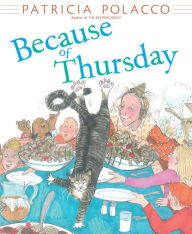

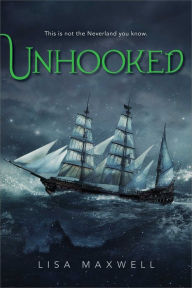





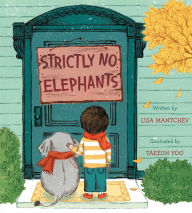

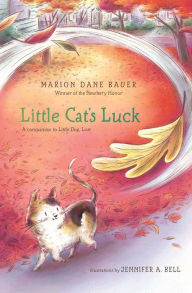












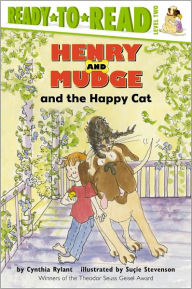

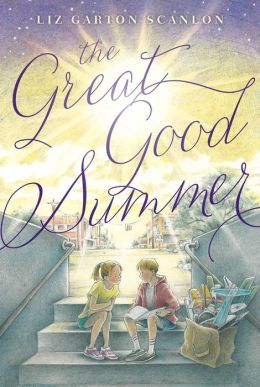

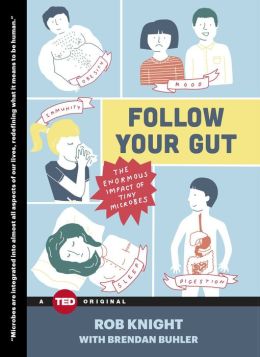
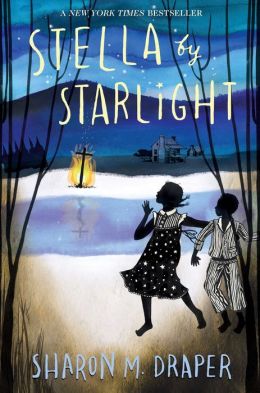



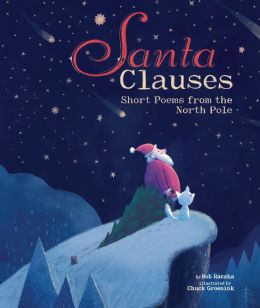
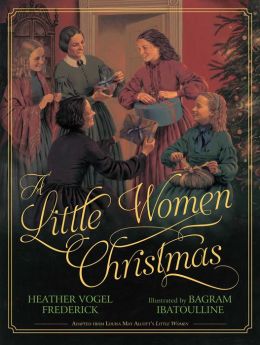
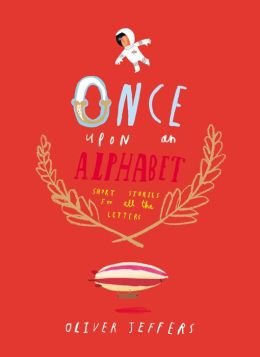
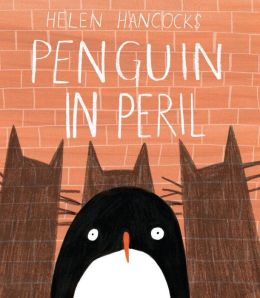
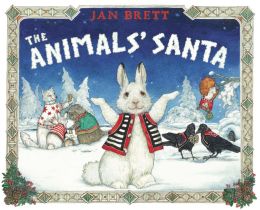

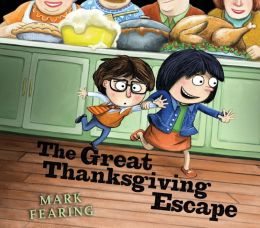
I reviewed this too last month: https://medinger.wordpress.com/2016/07/10/coming-soon-jason-reynolds-ghost/ Zipped to the top of my Newbery goodreads list.
Yes to everything in this review. I cannot wait to put this in the hands of our fifth graders in a few weeks.
Yes, Yes, and and even bigger YES if that’s even possilble.
[…] Ghost review […]